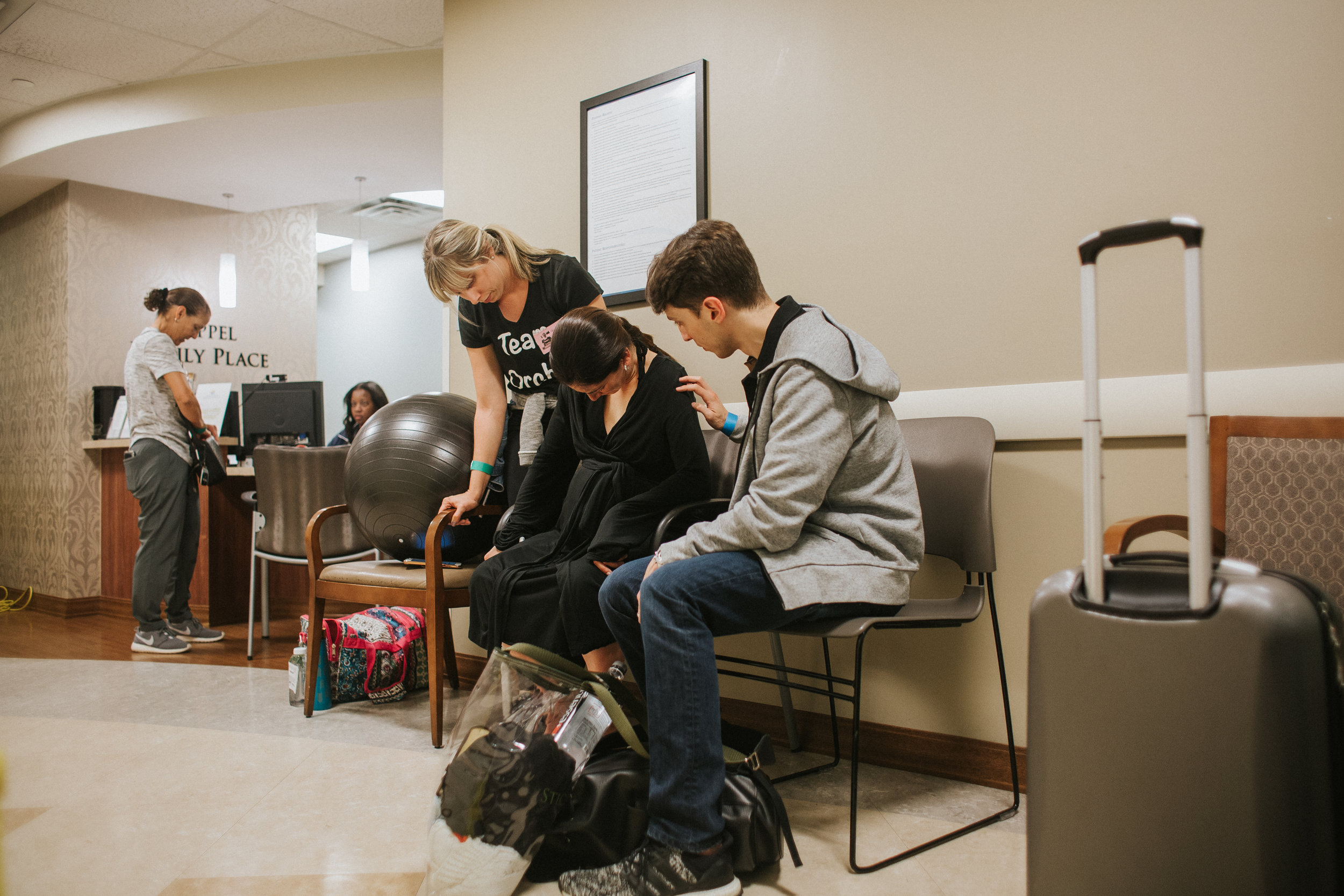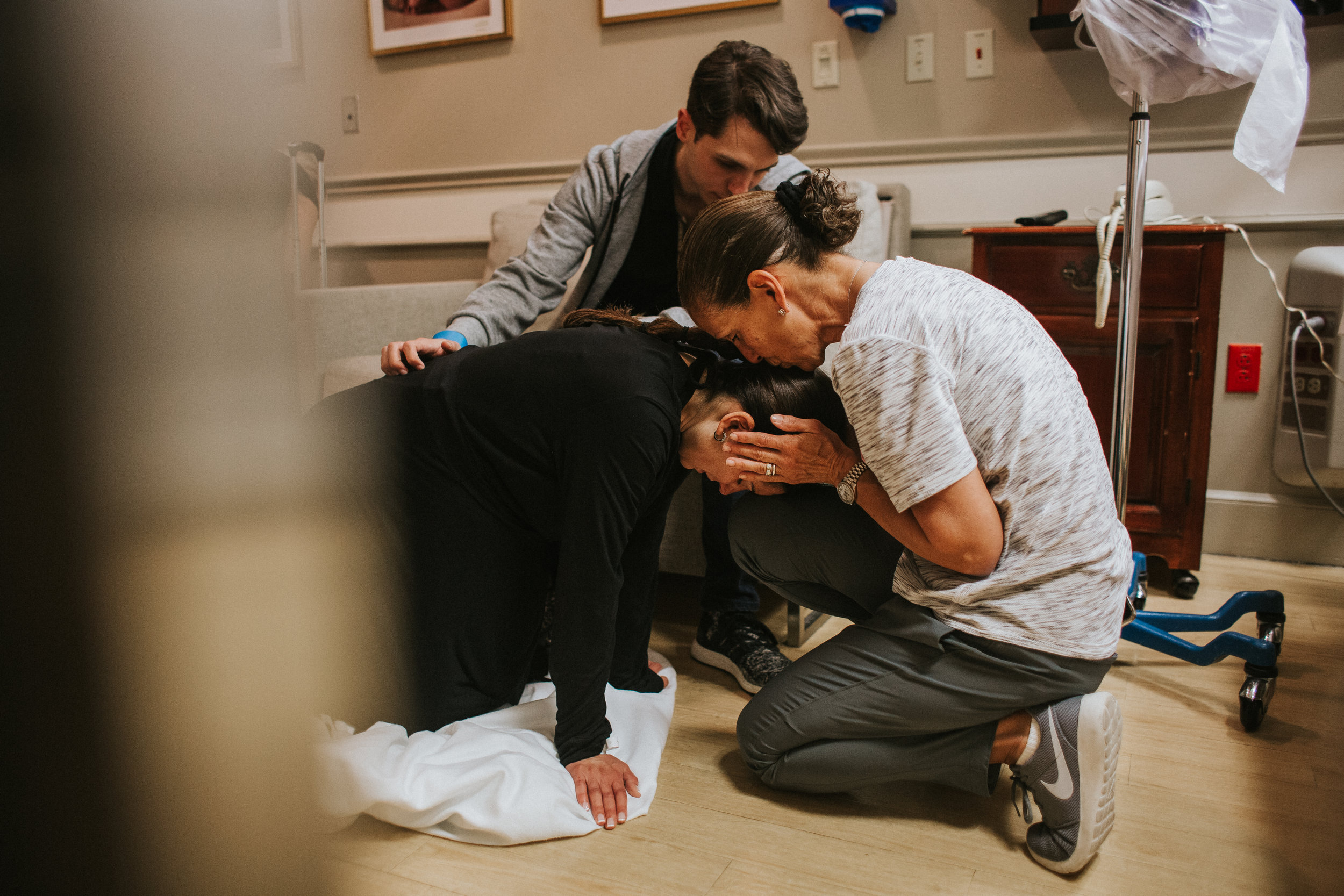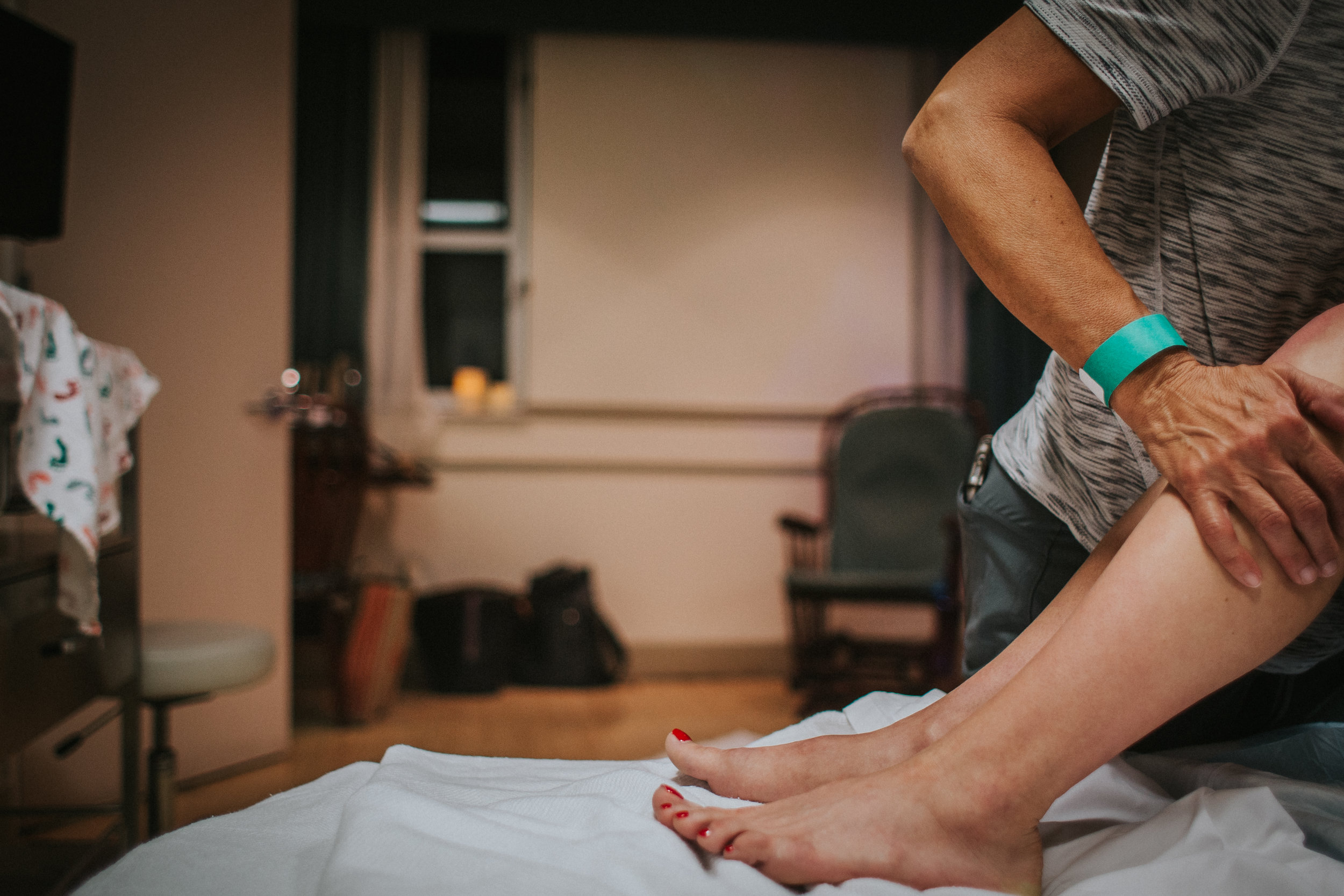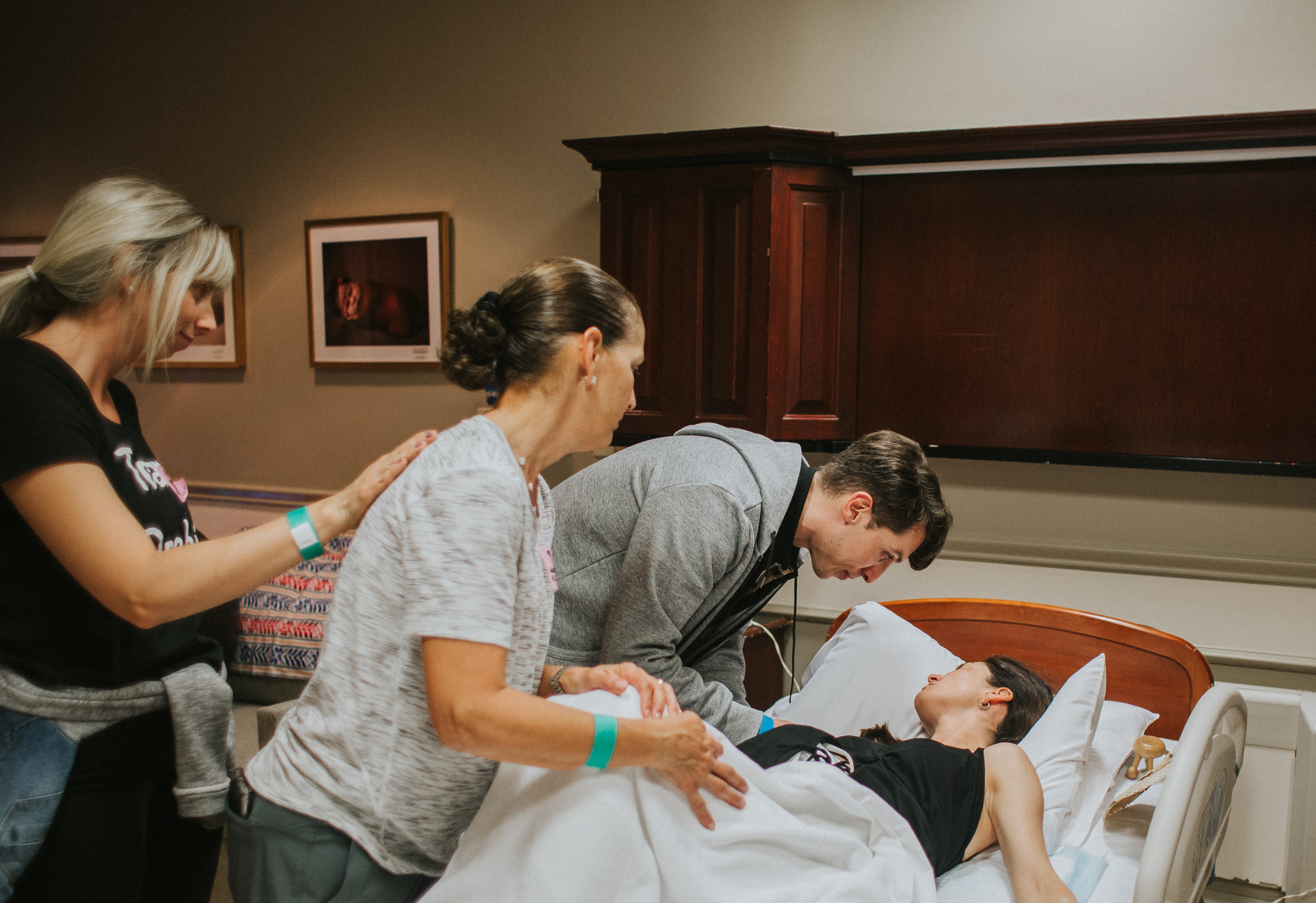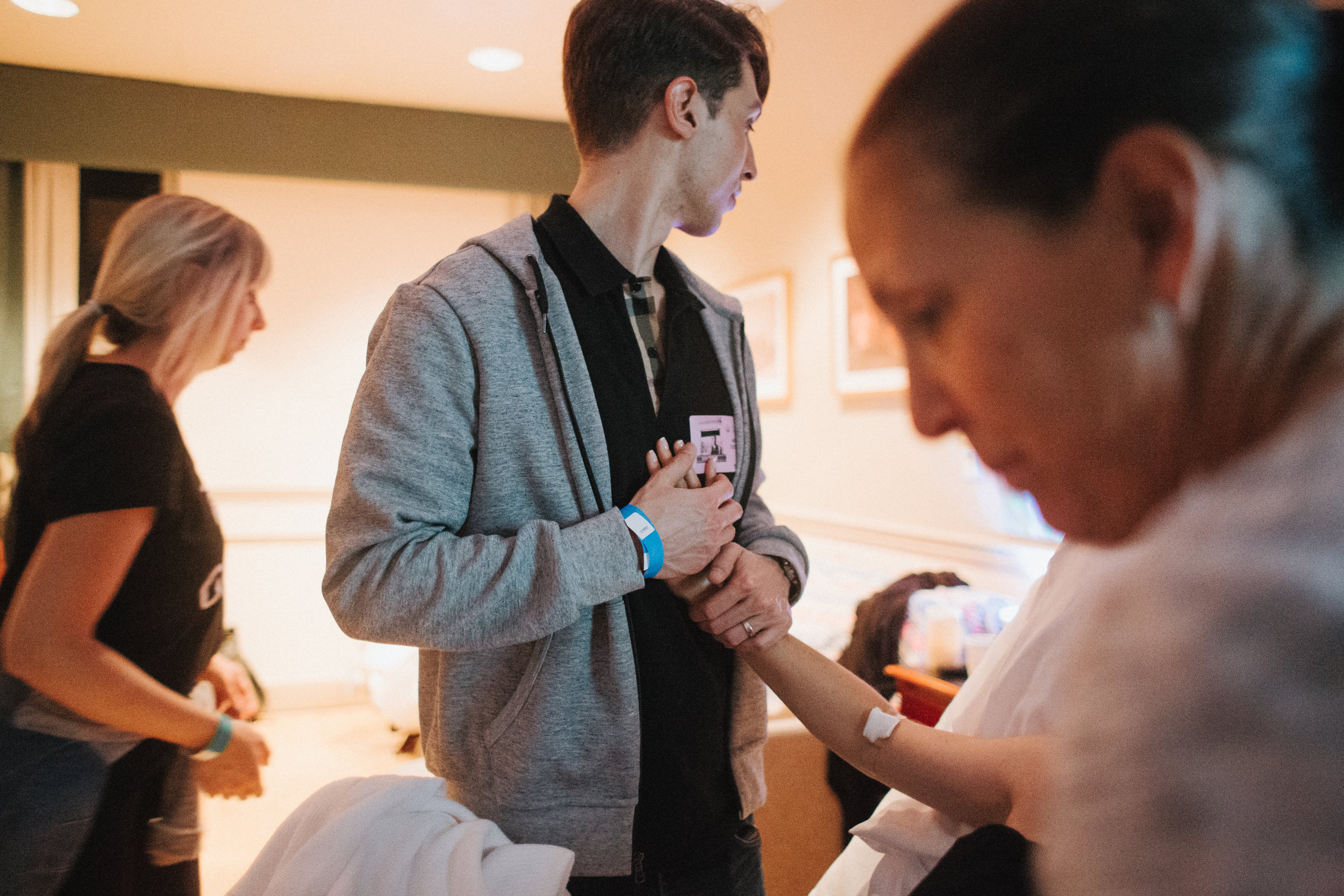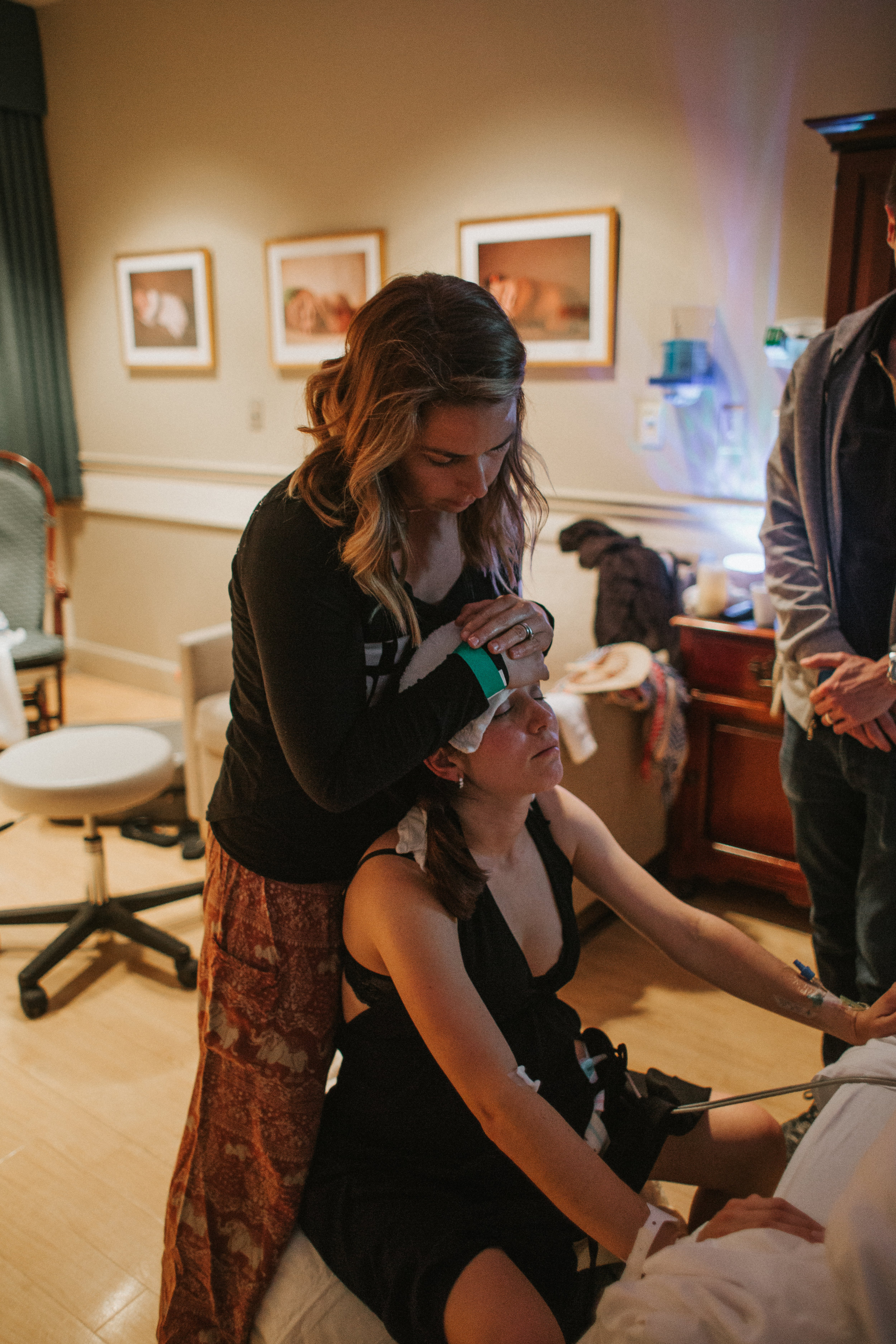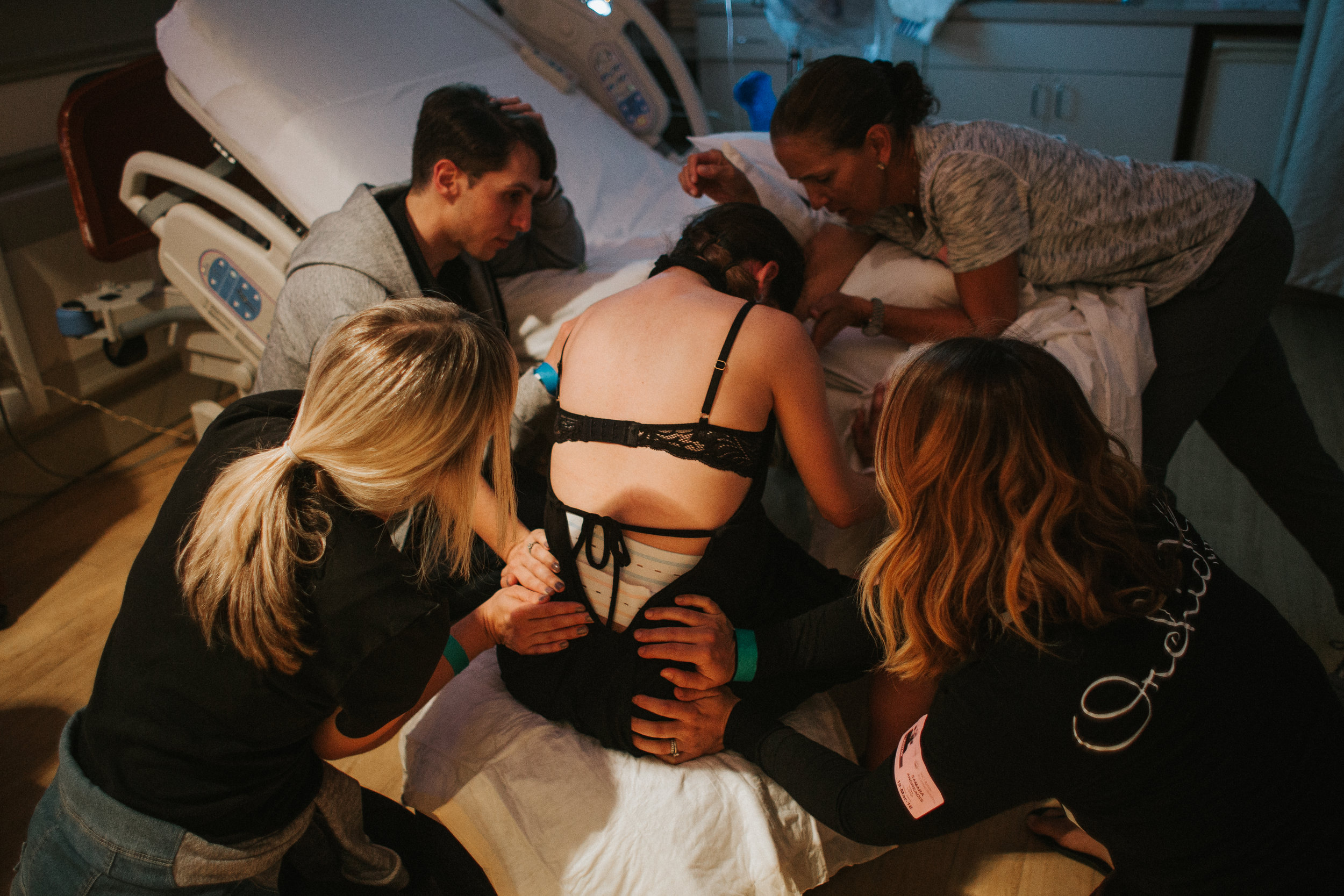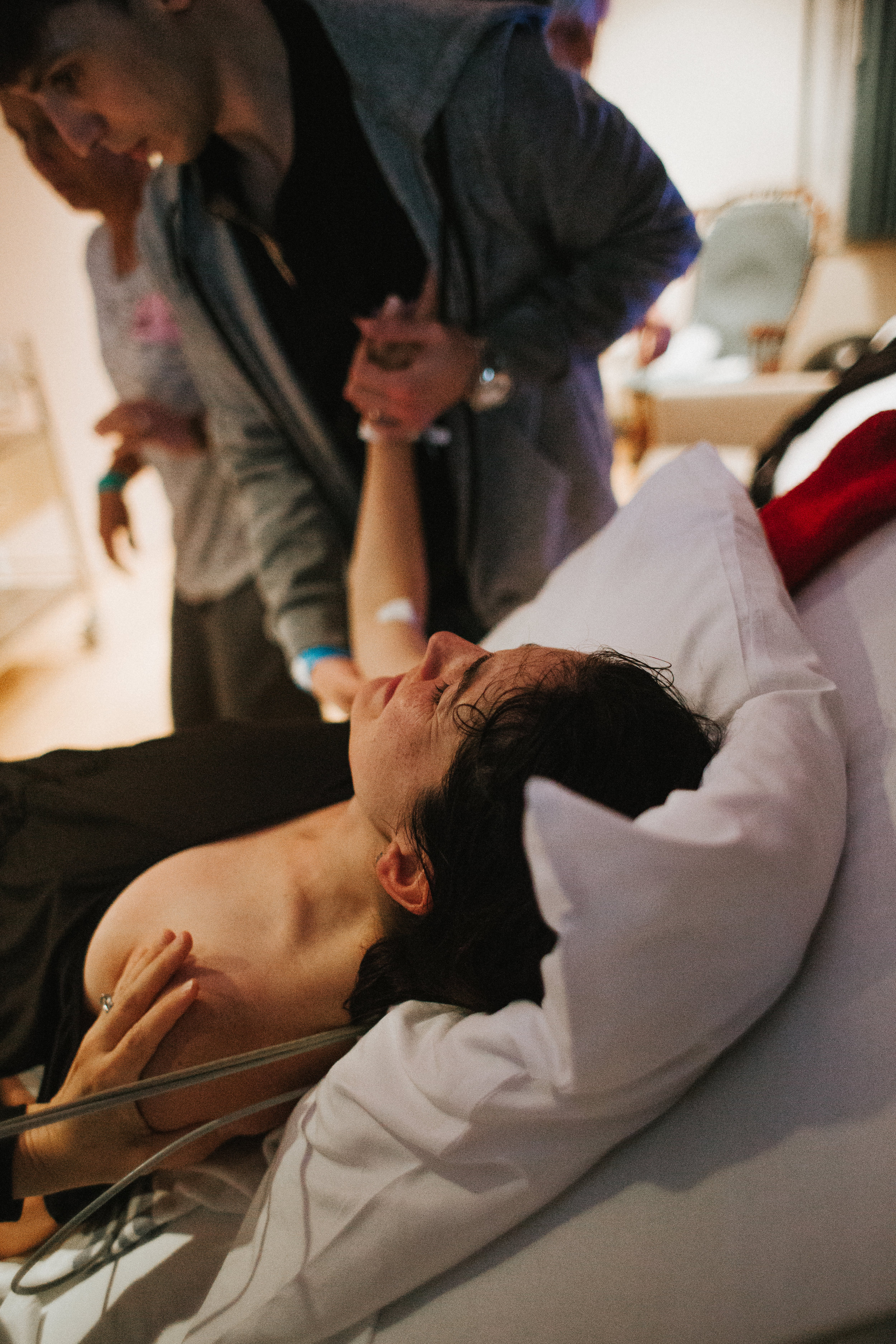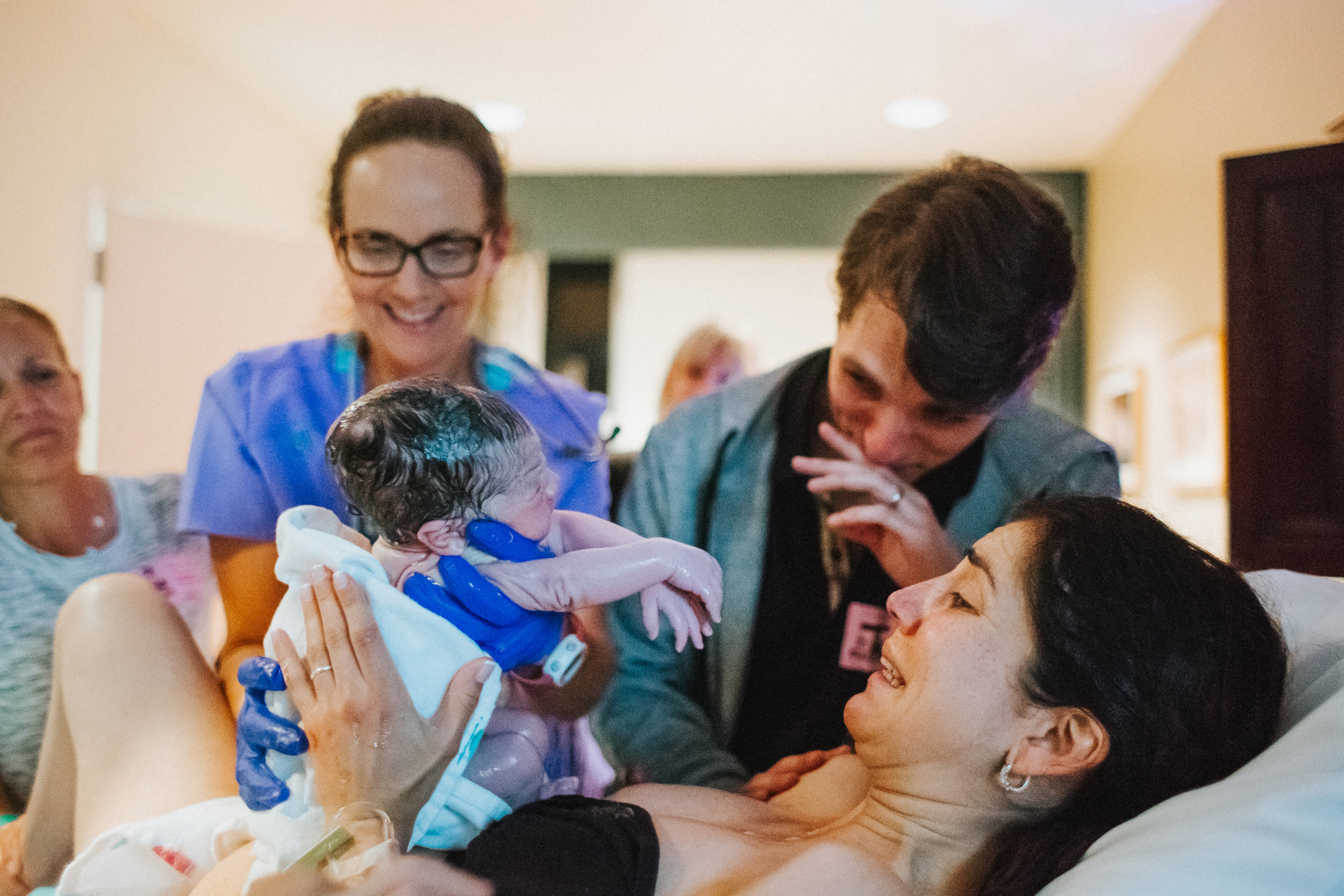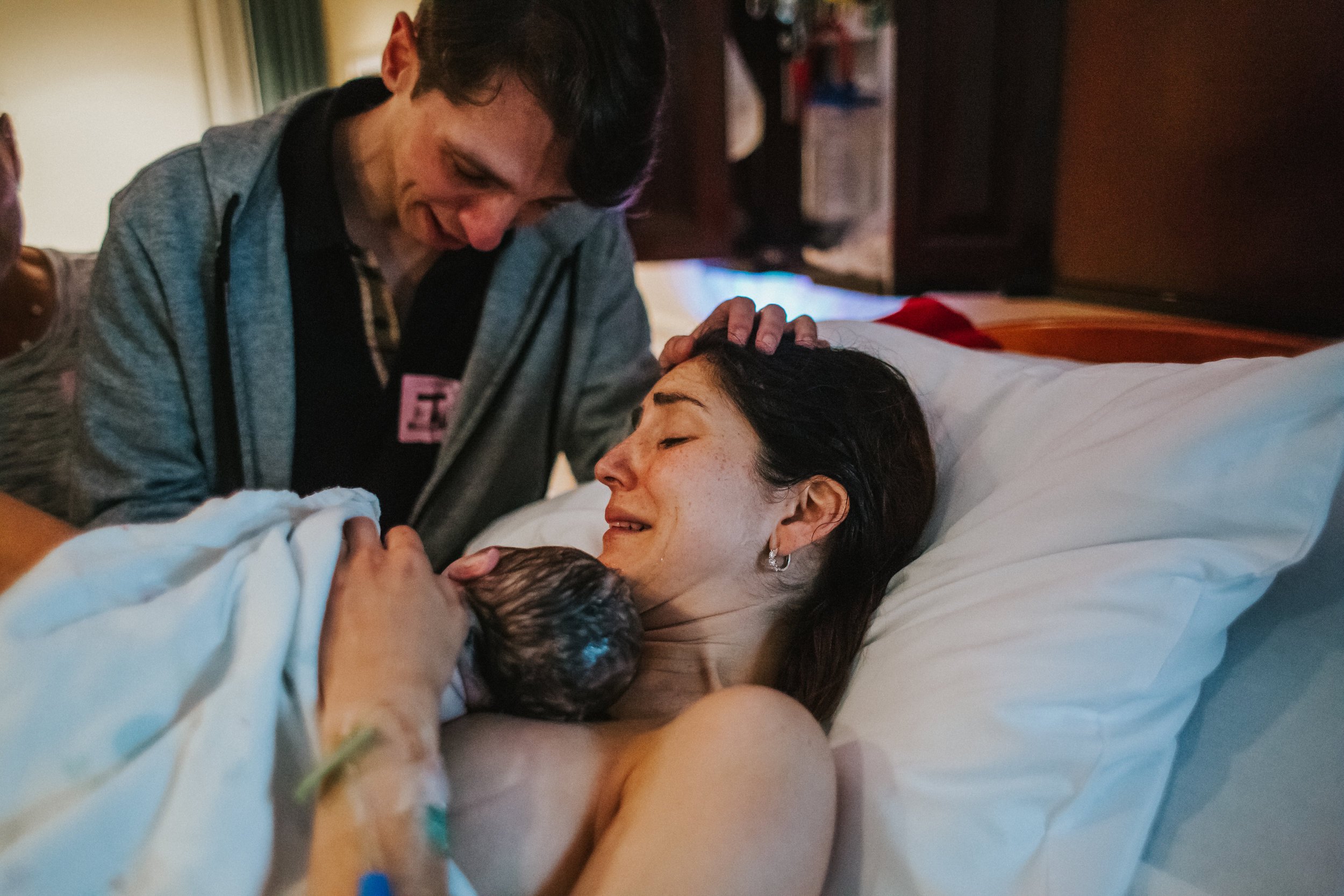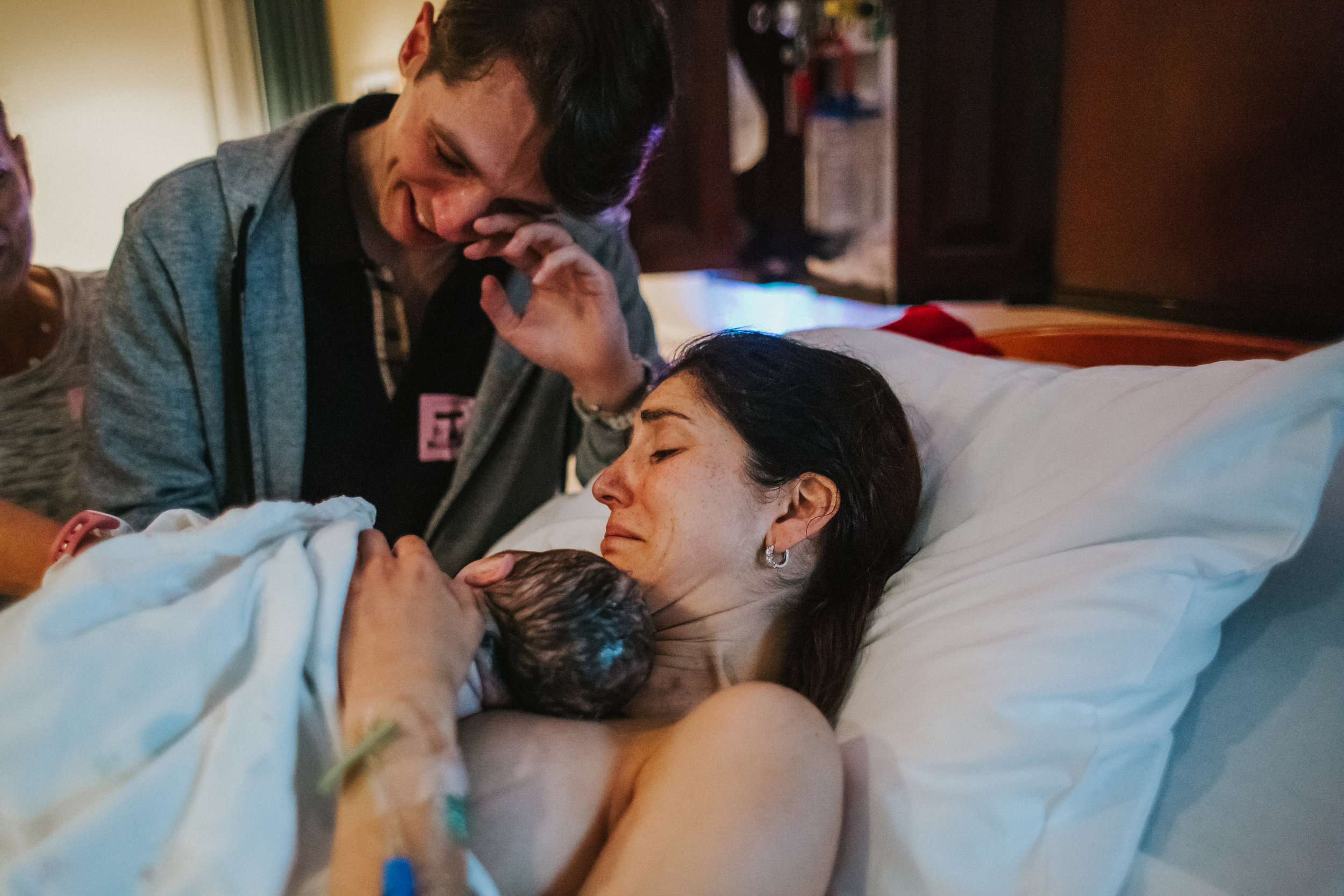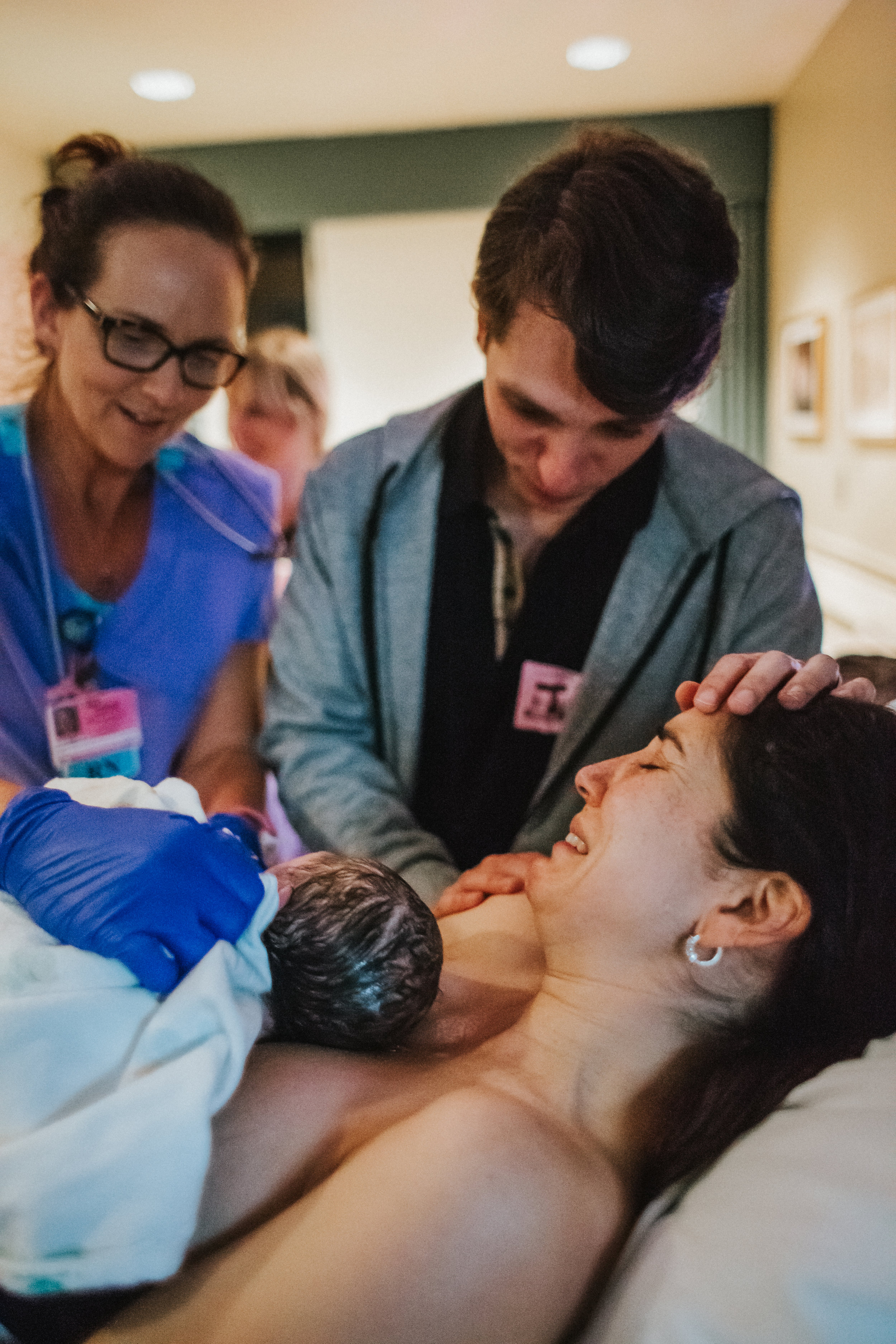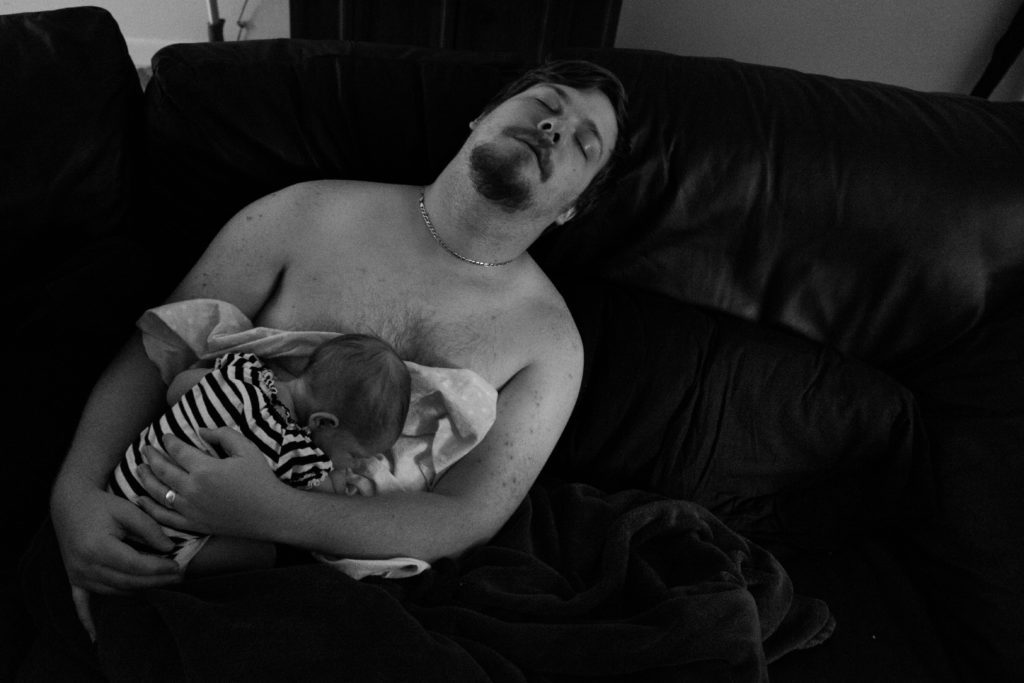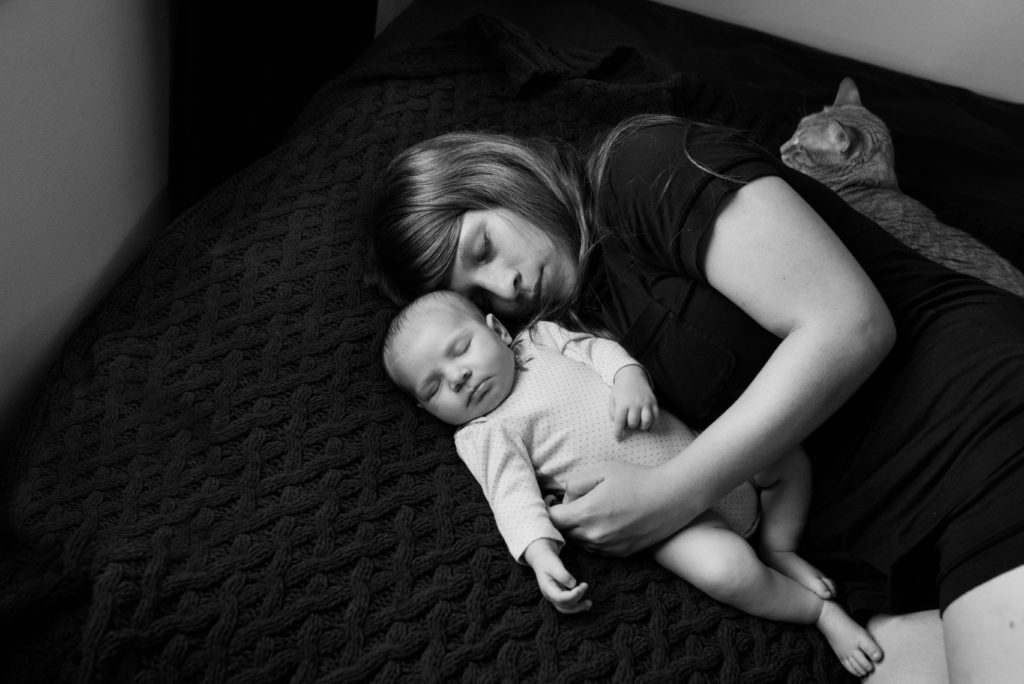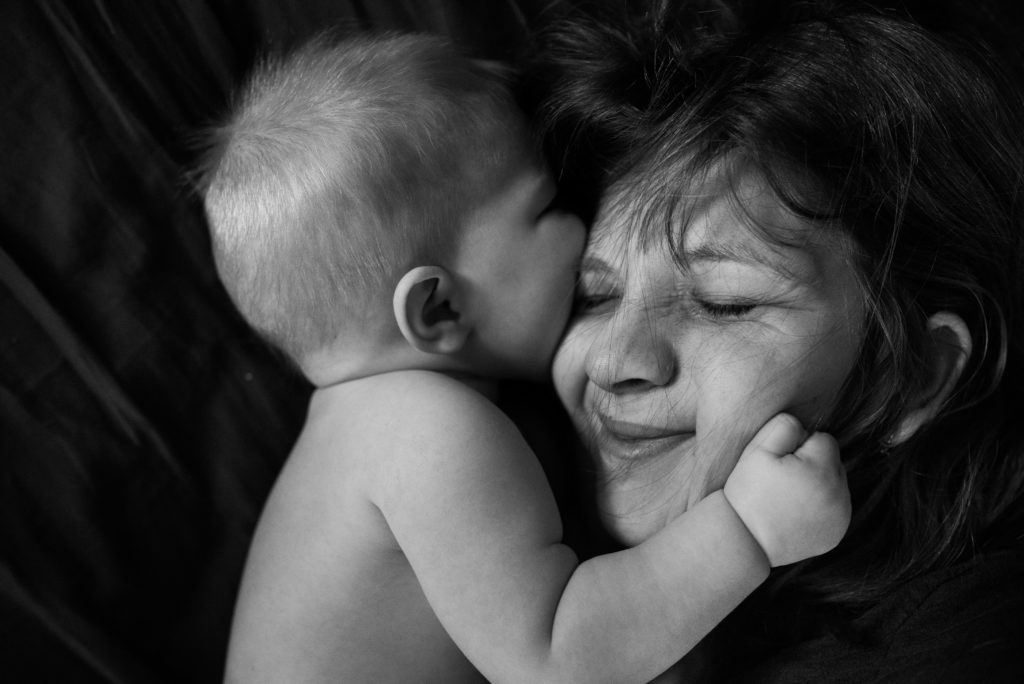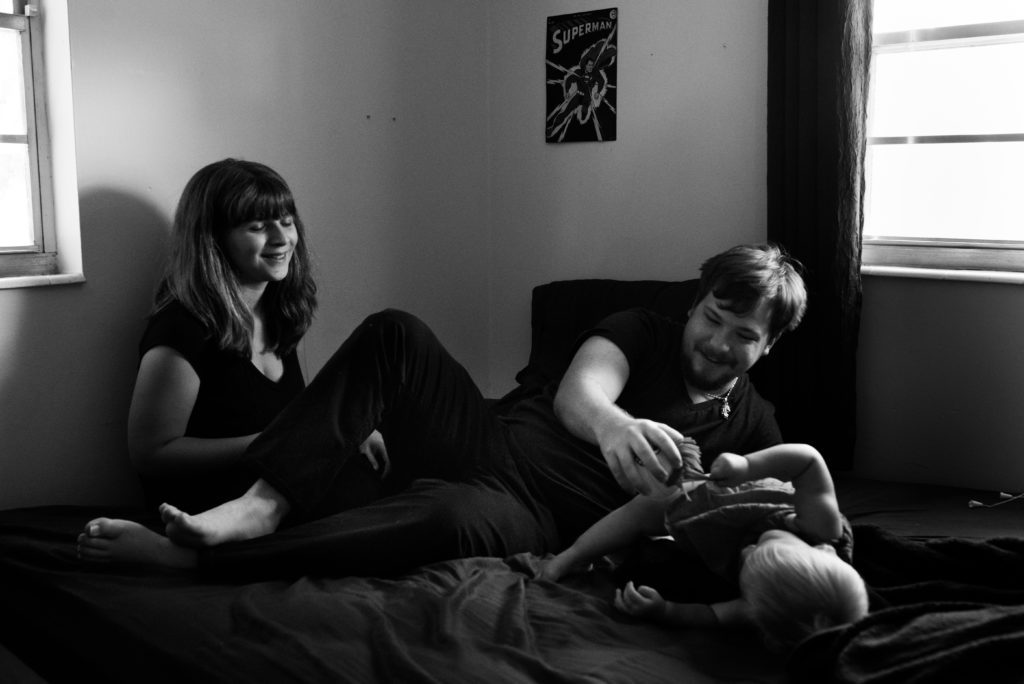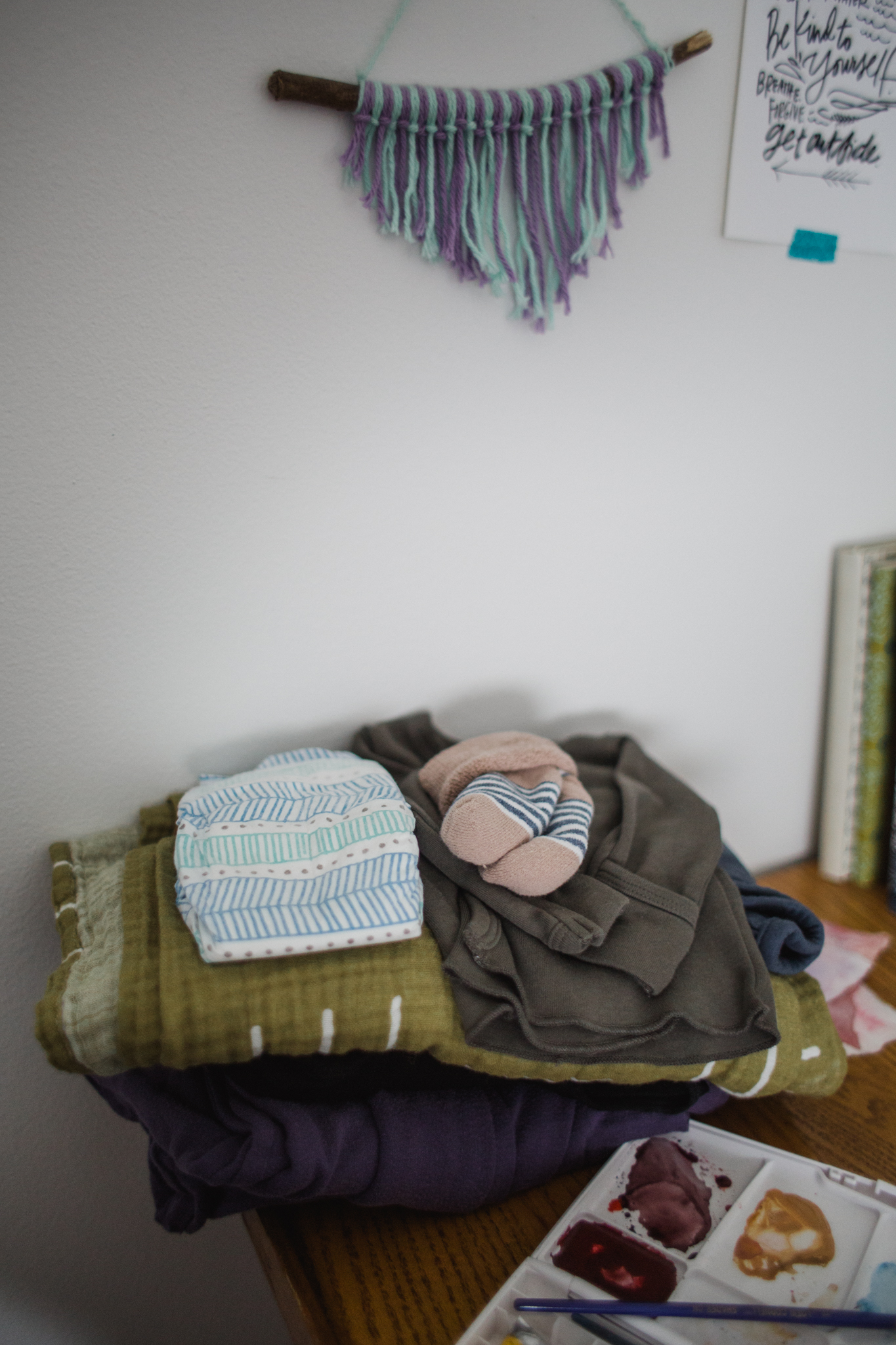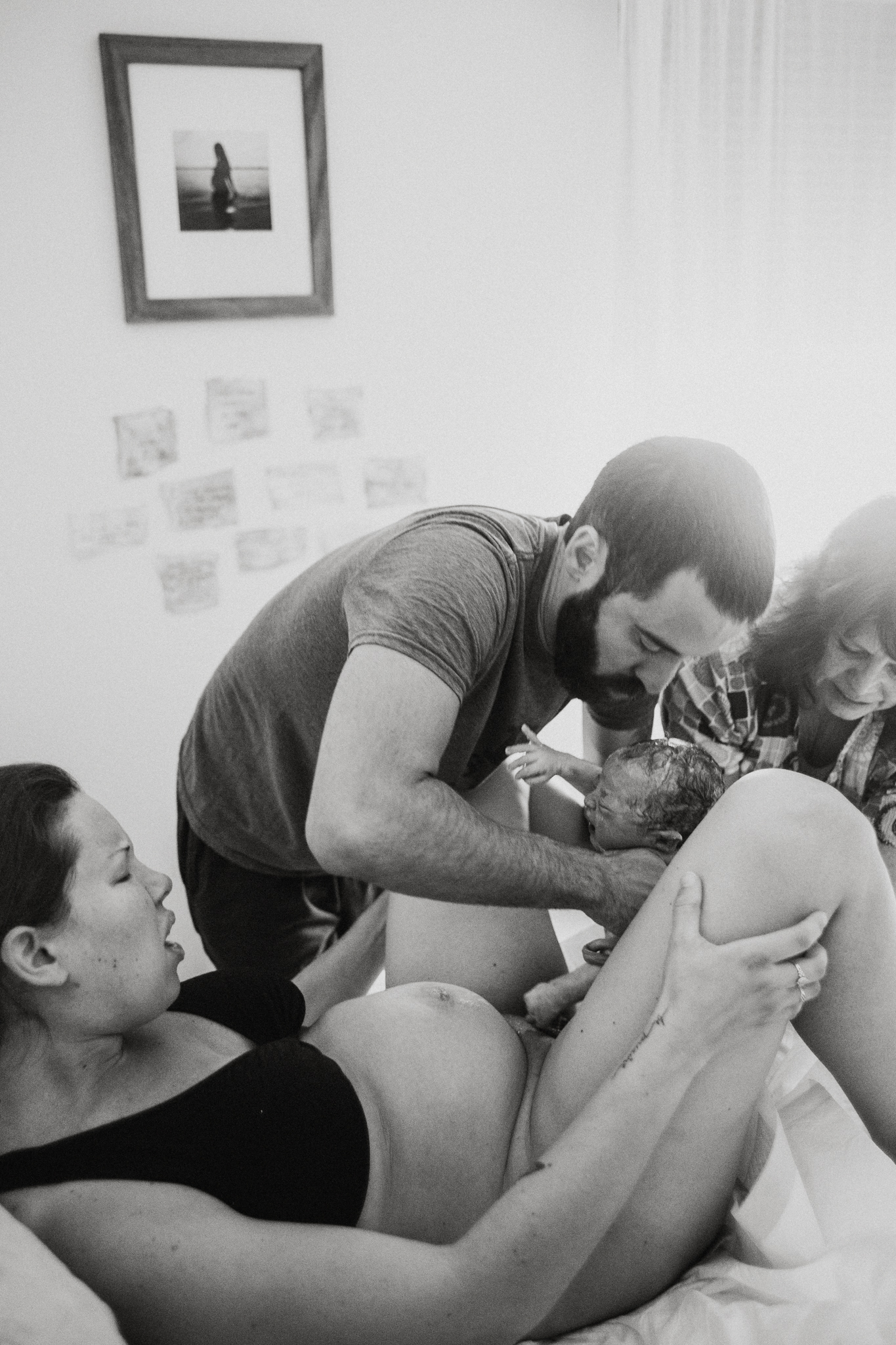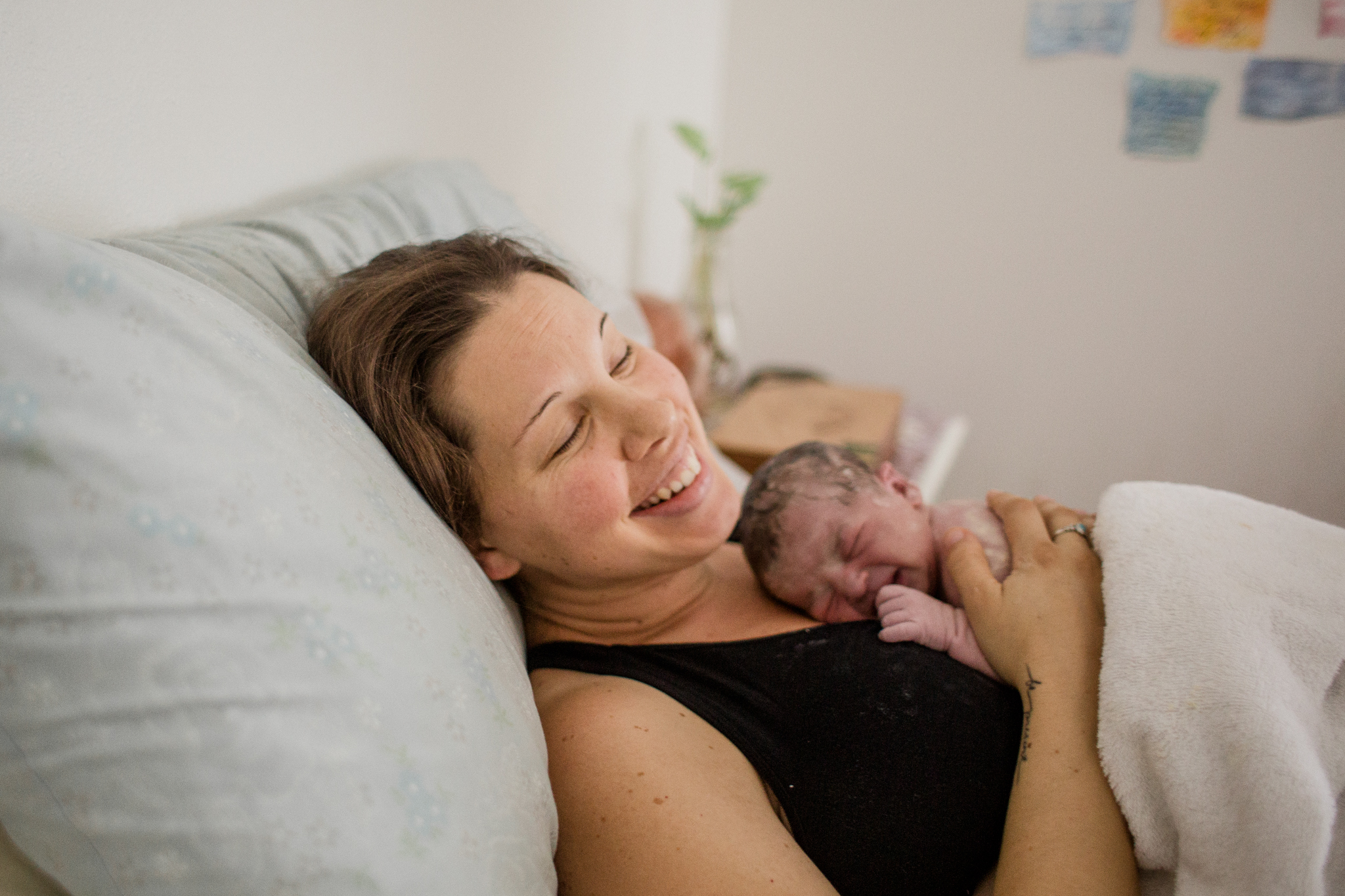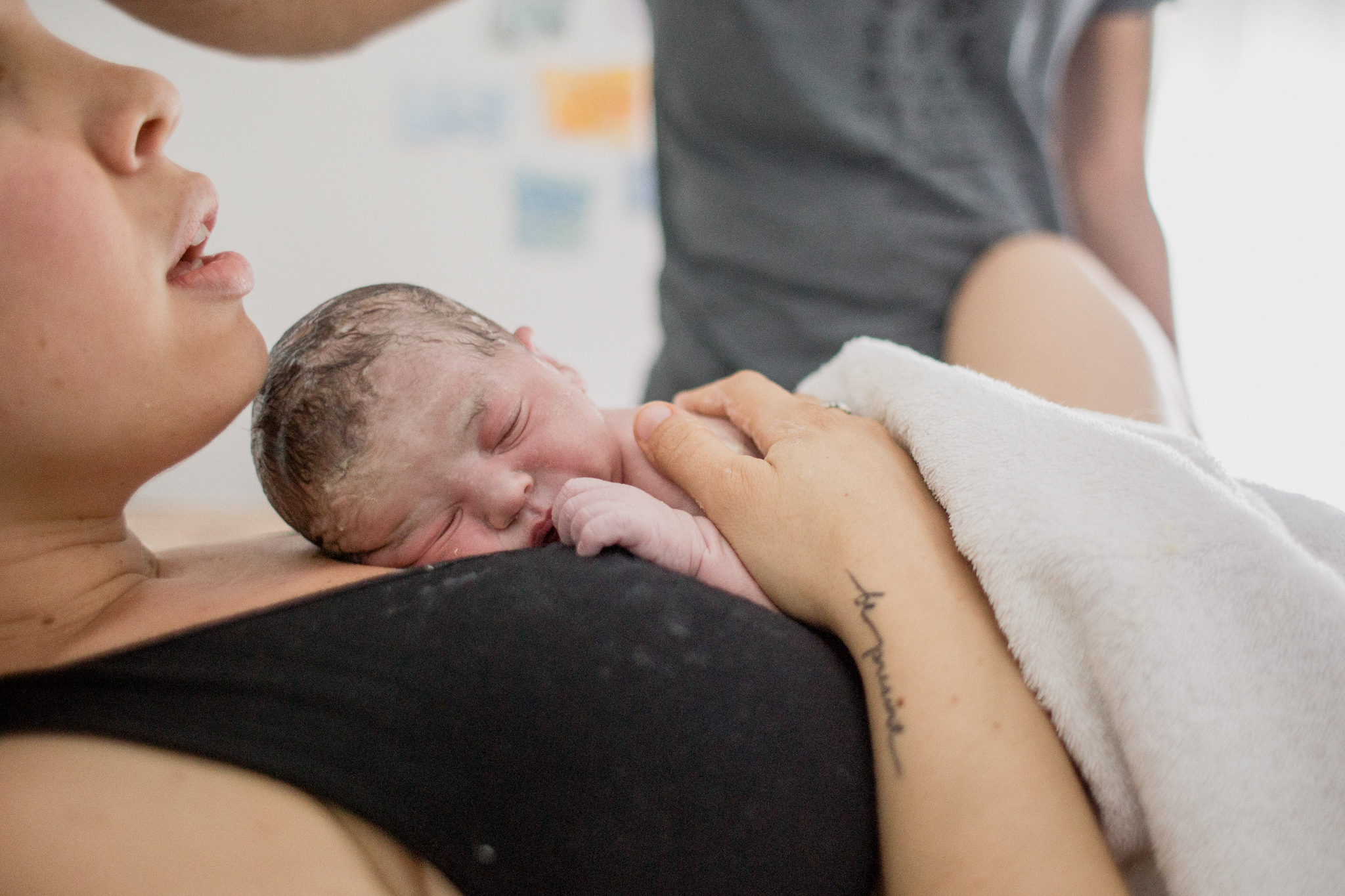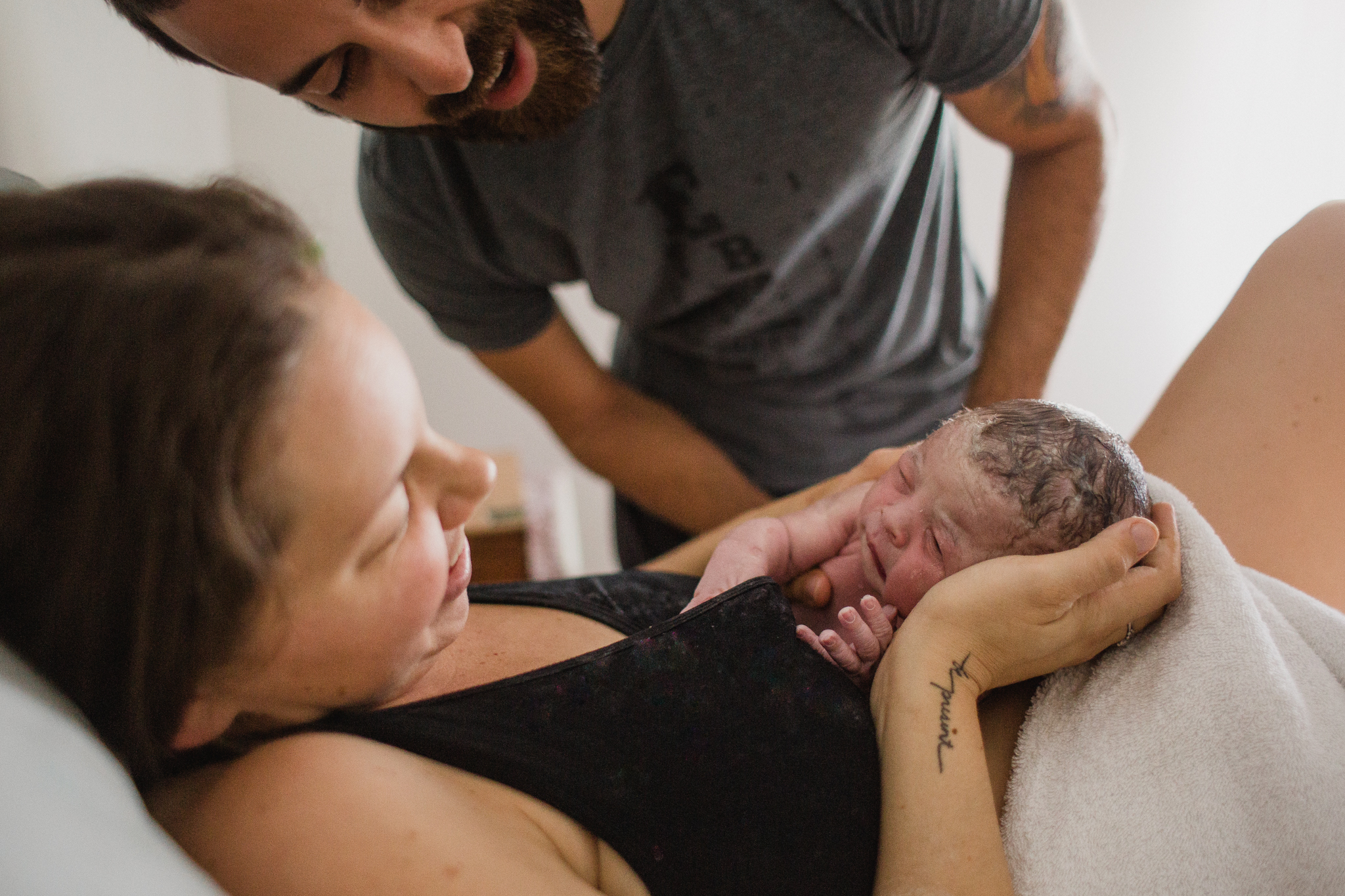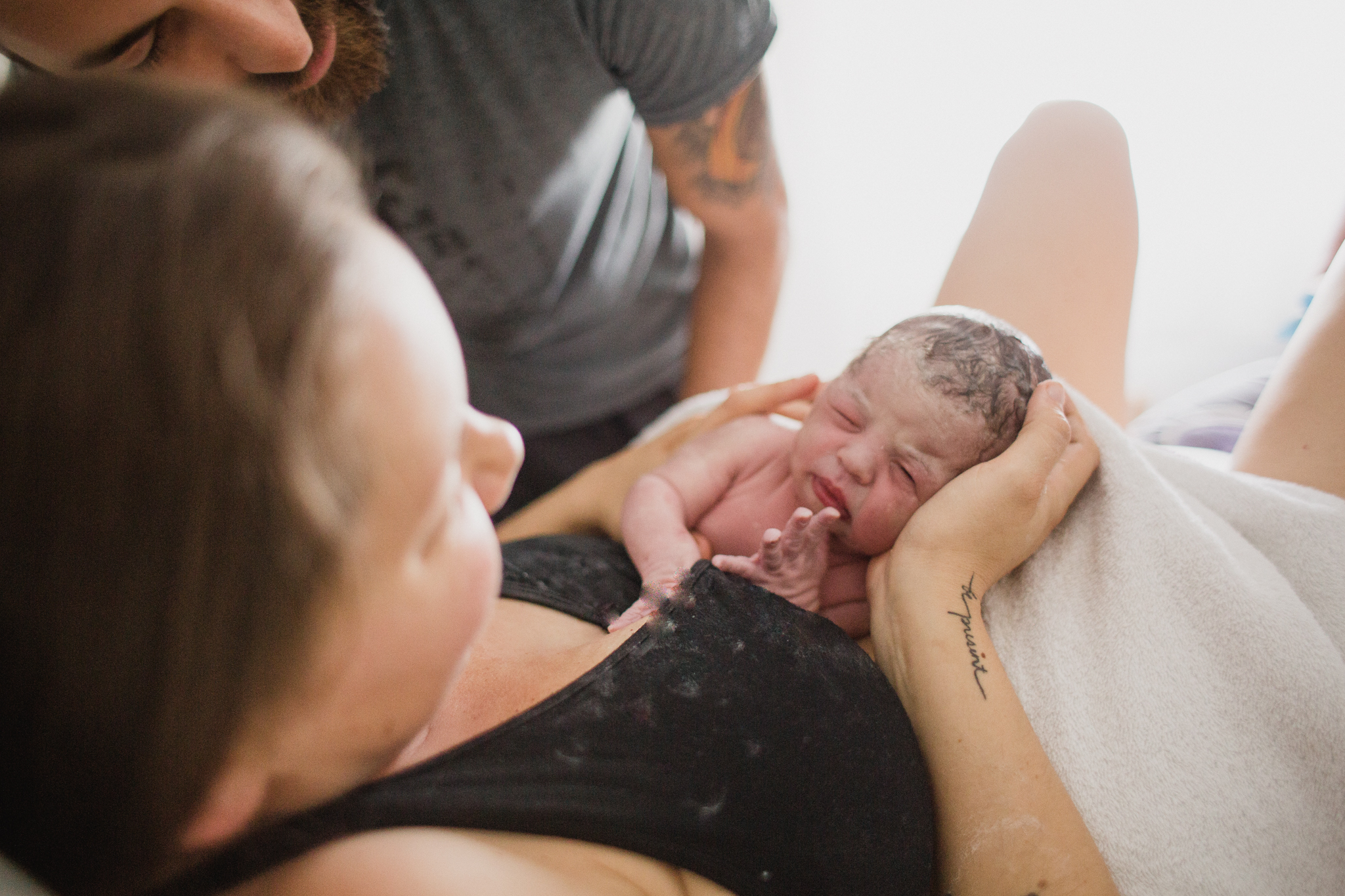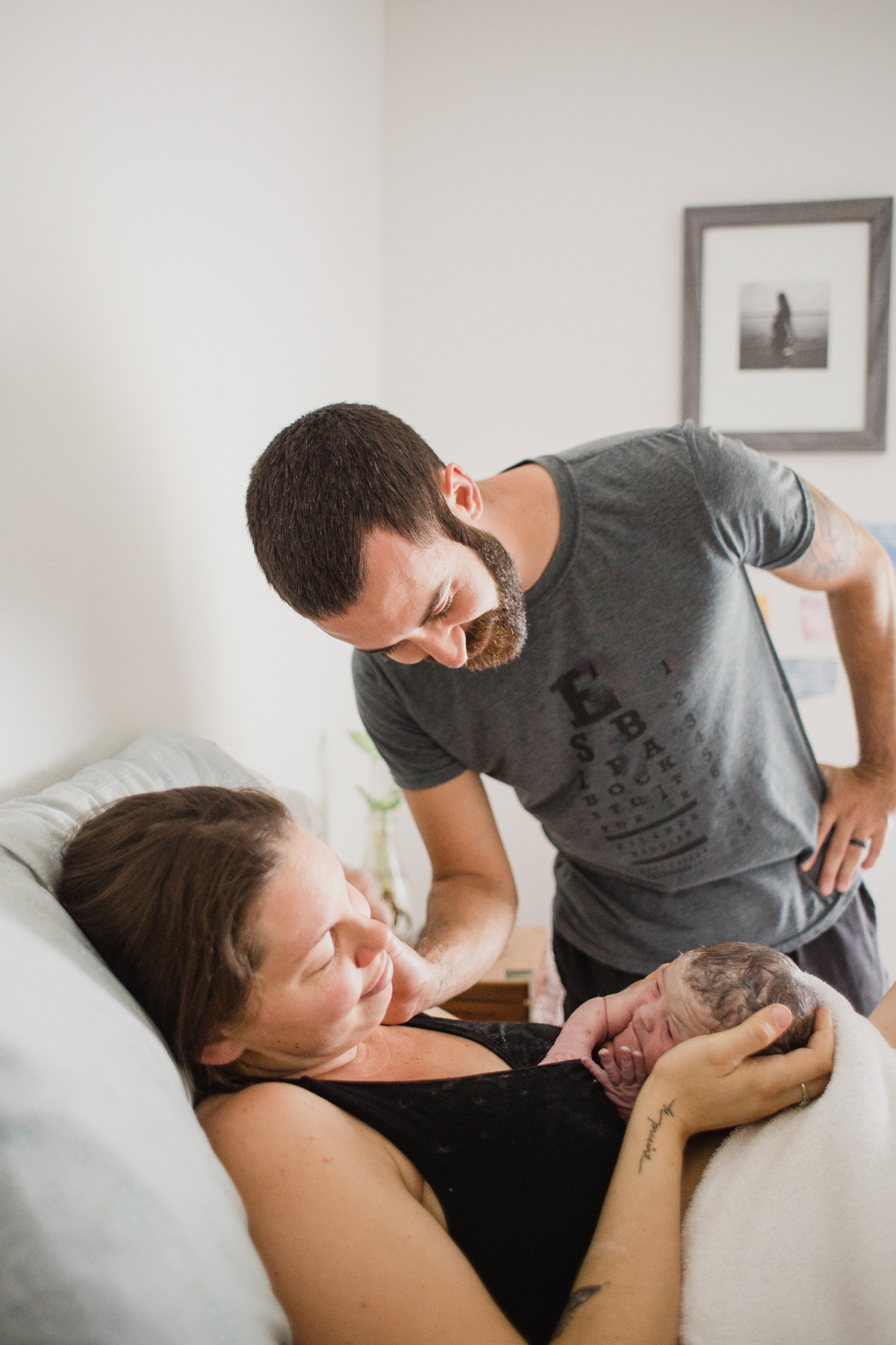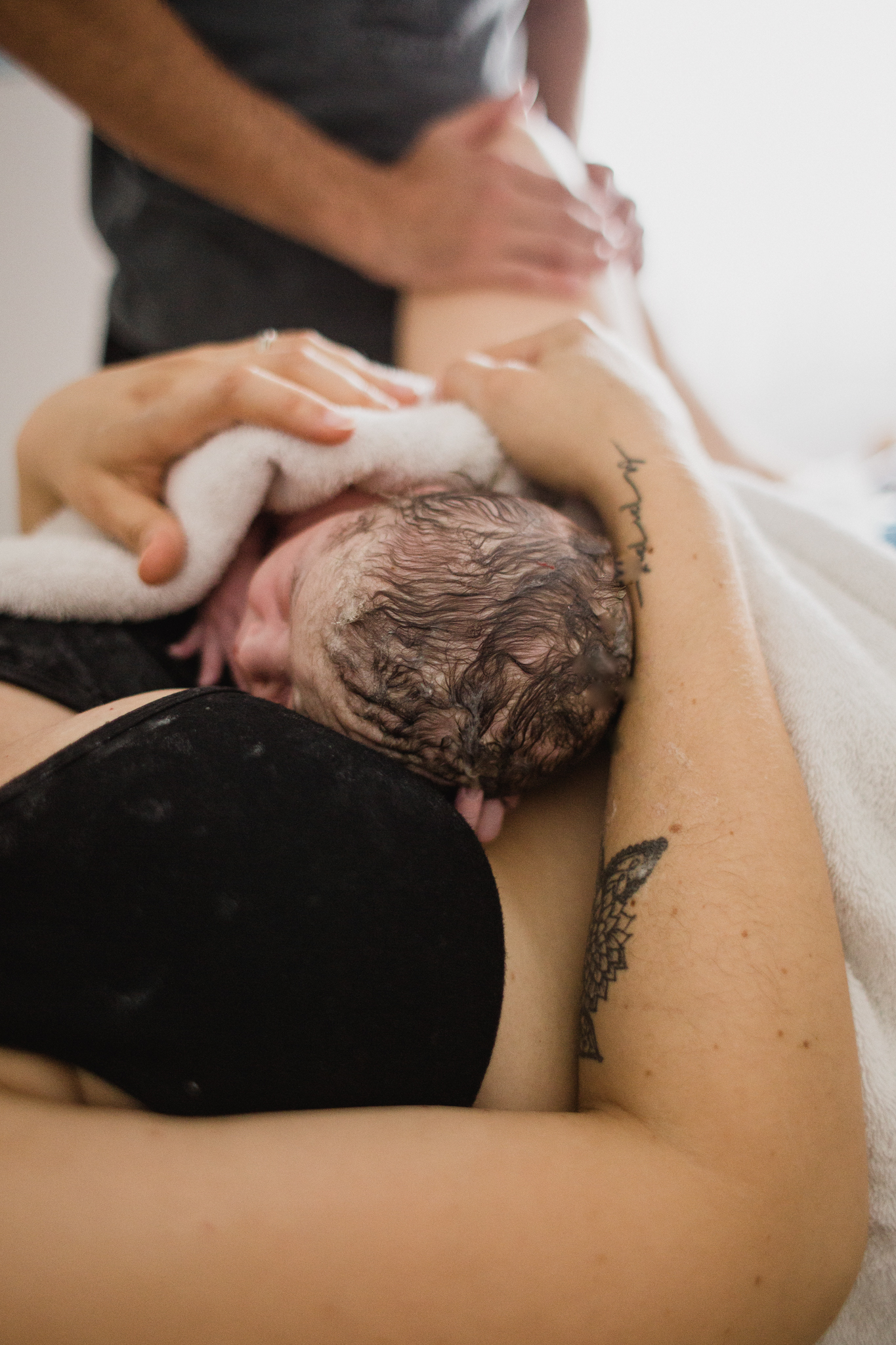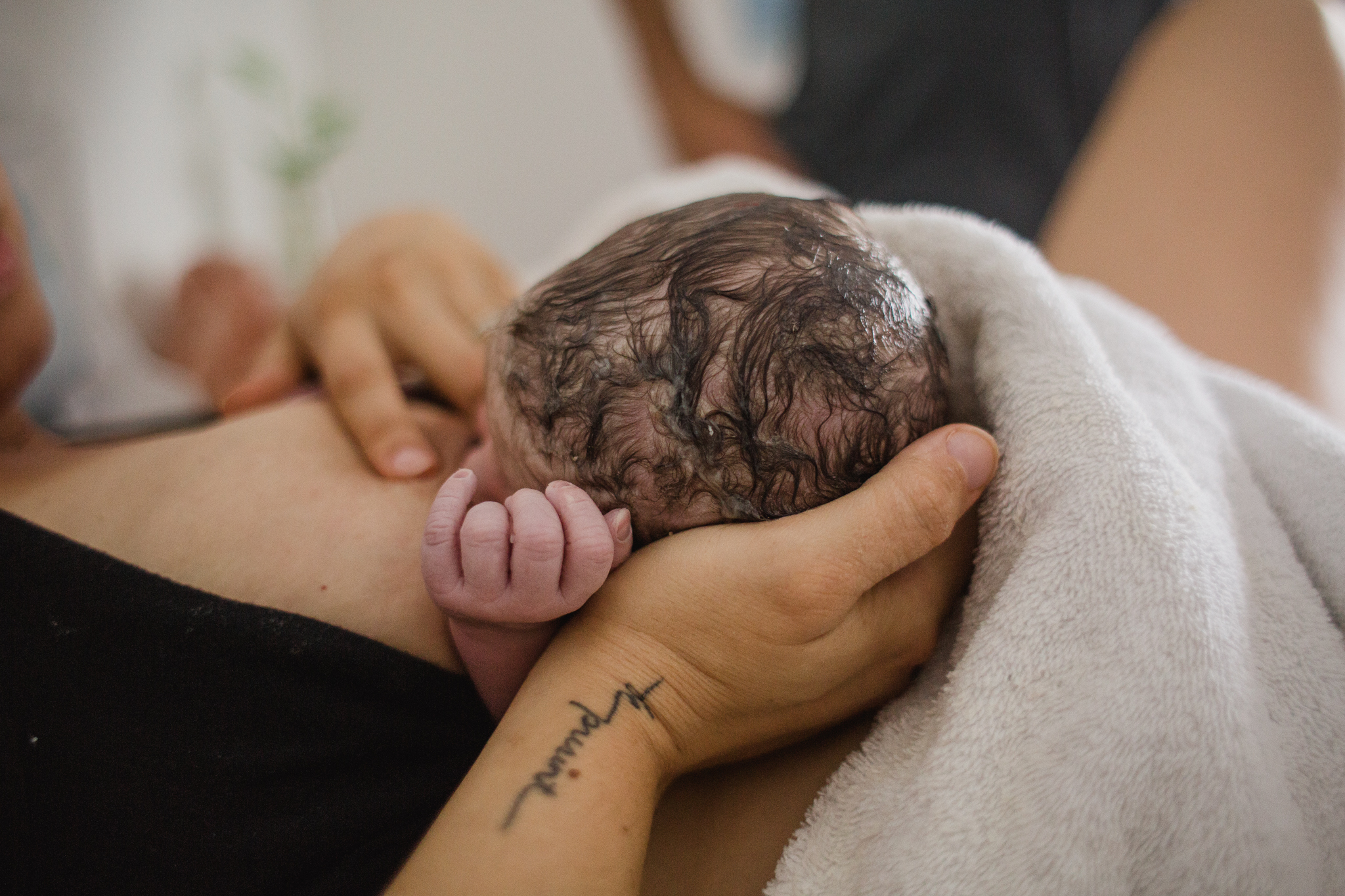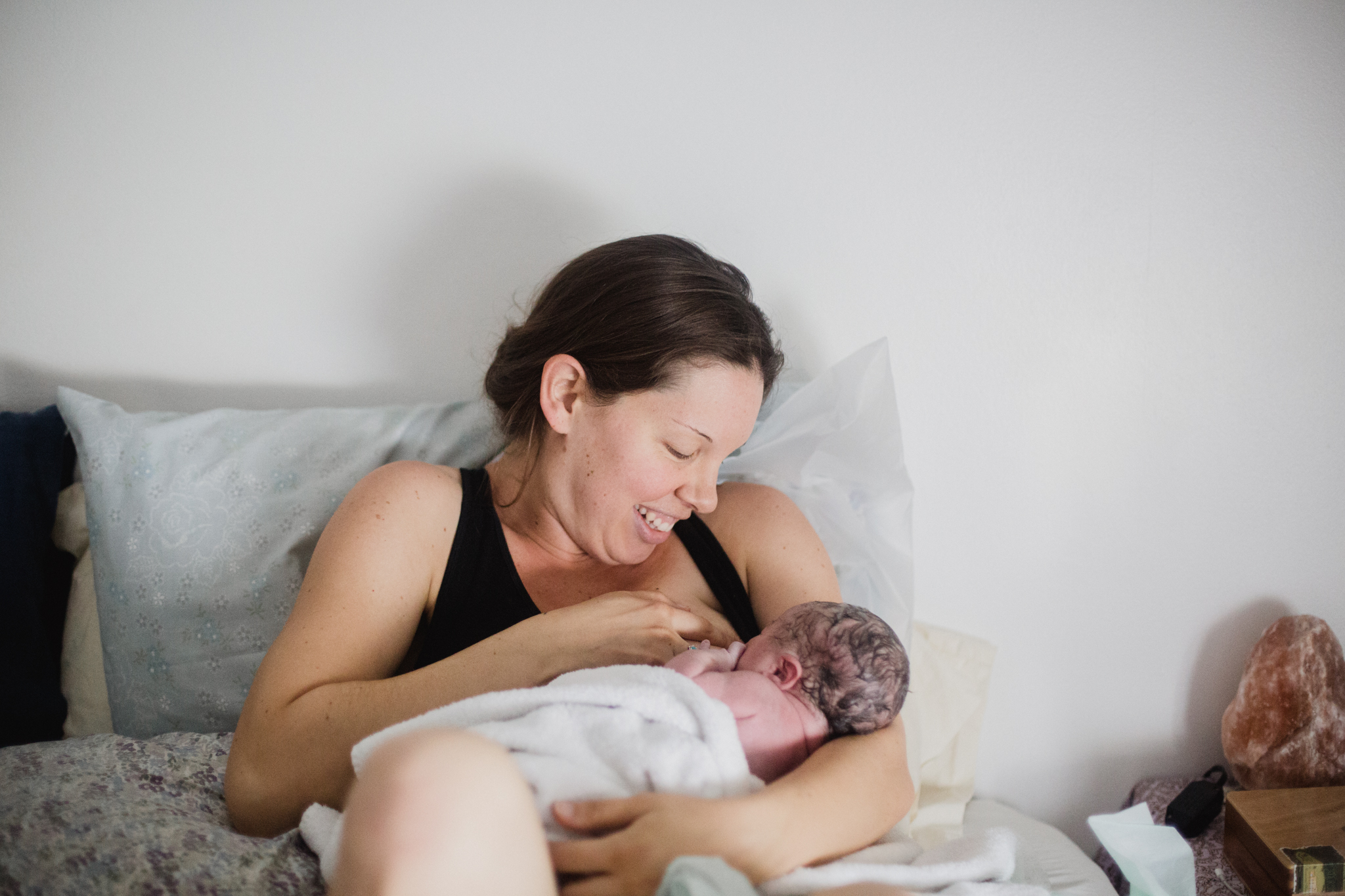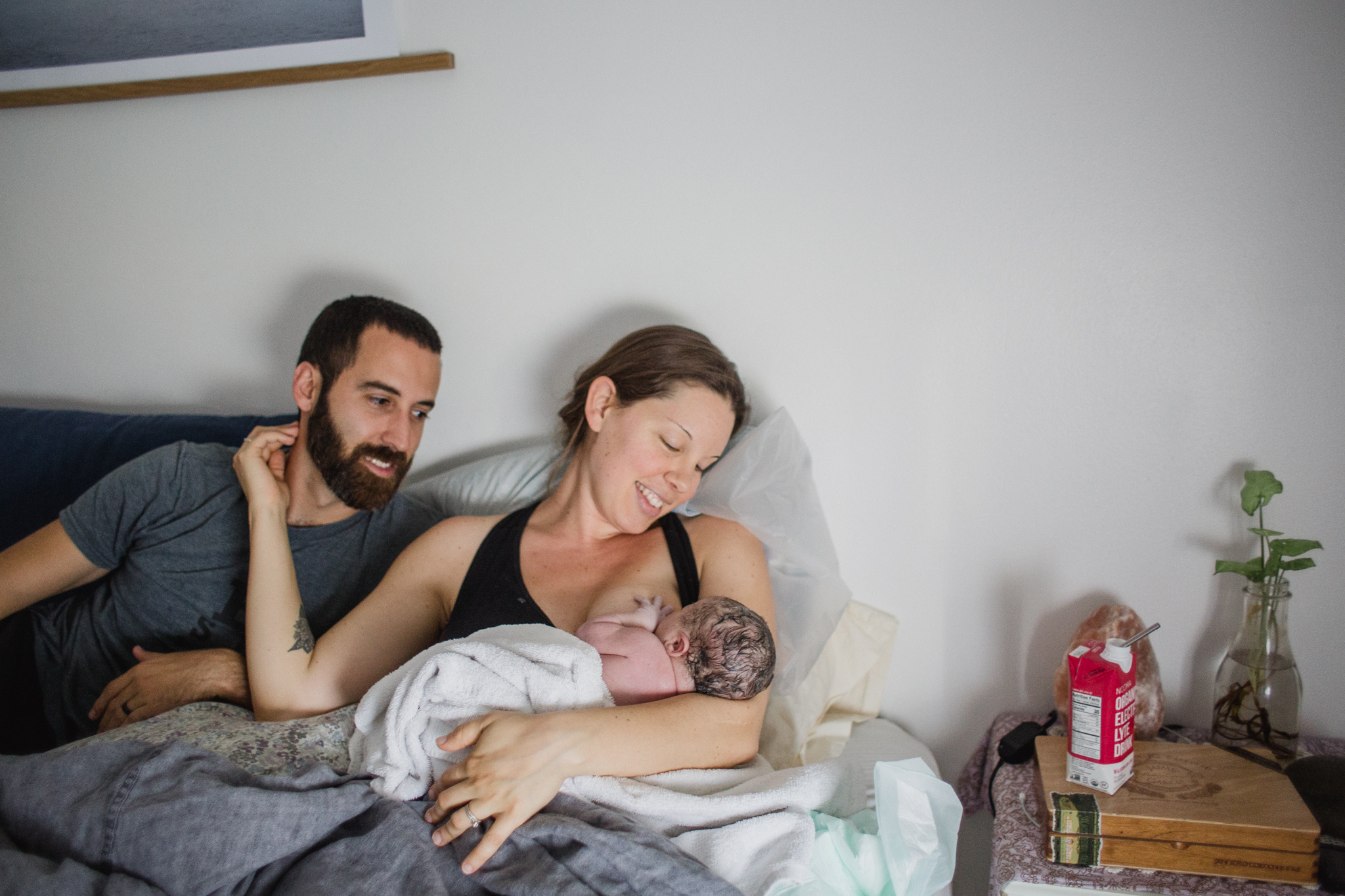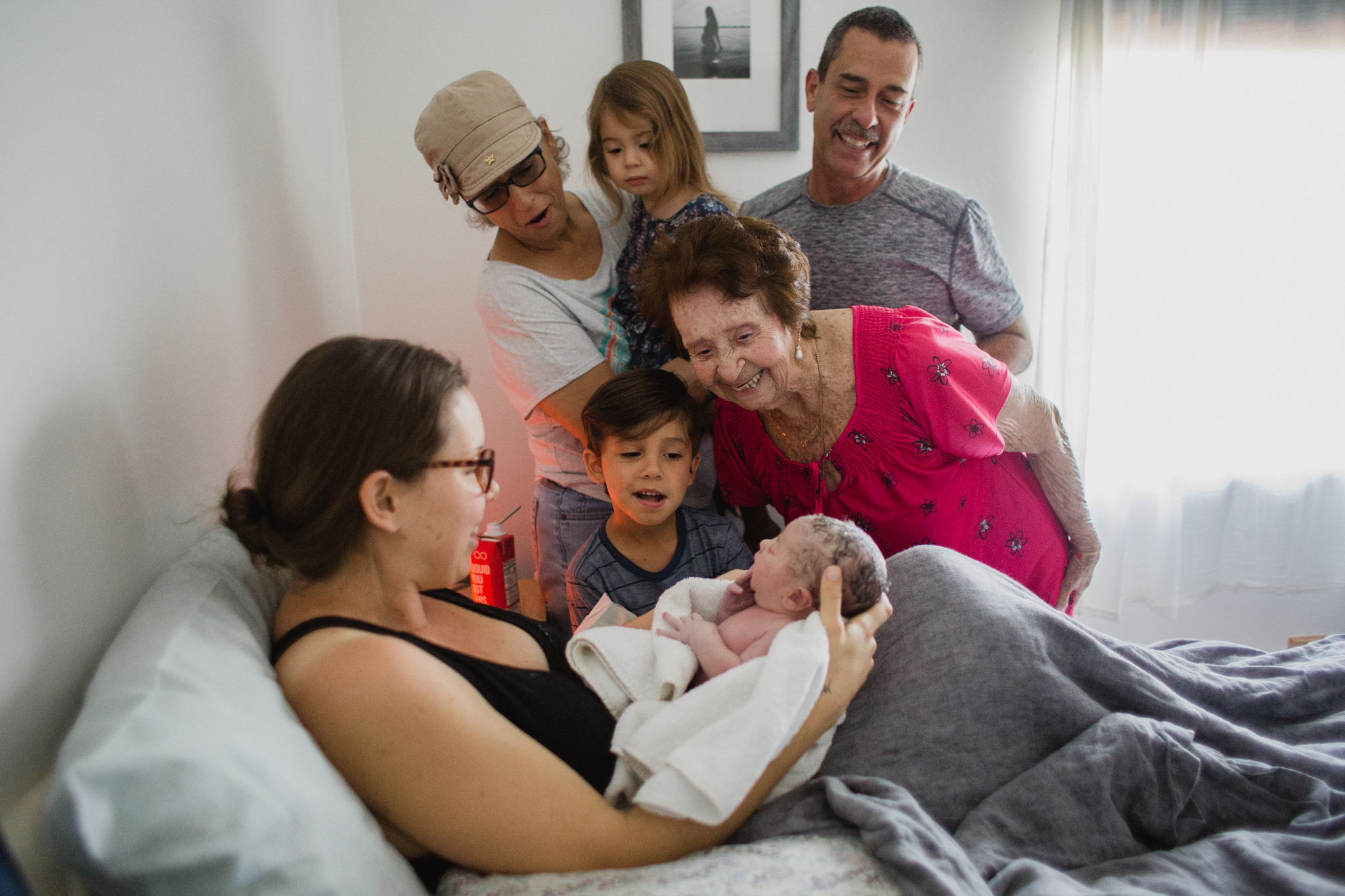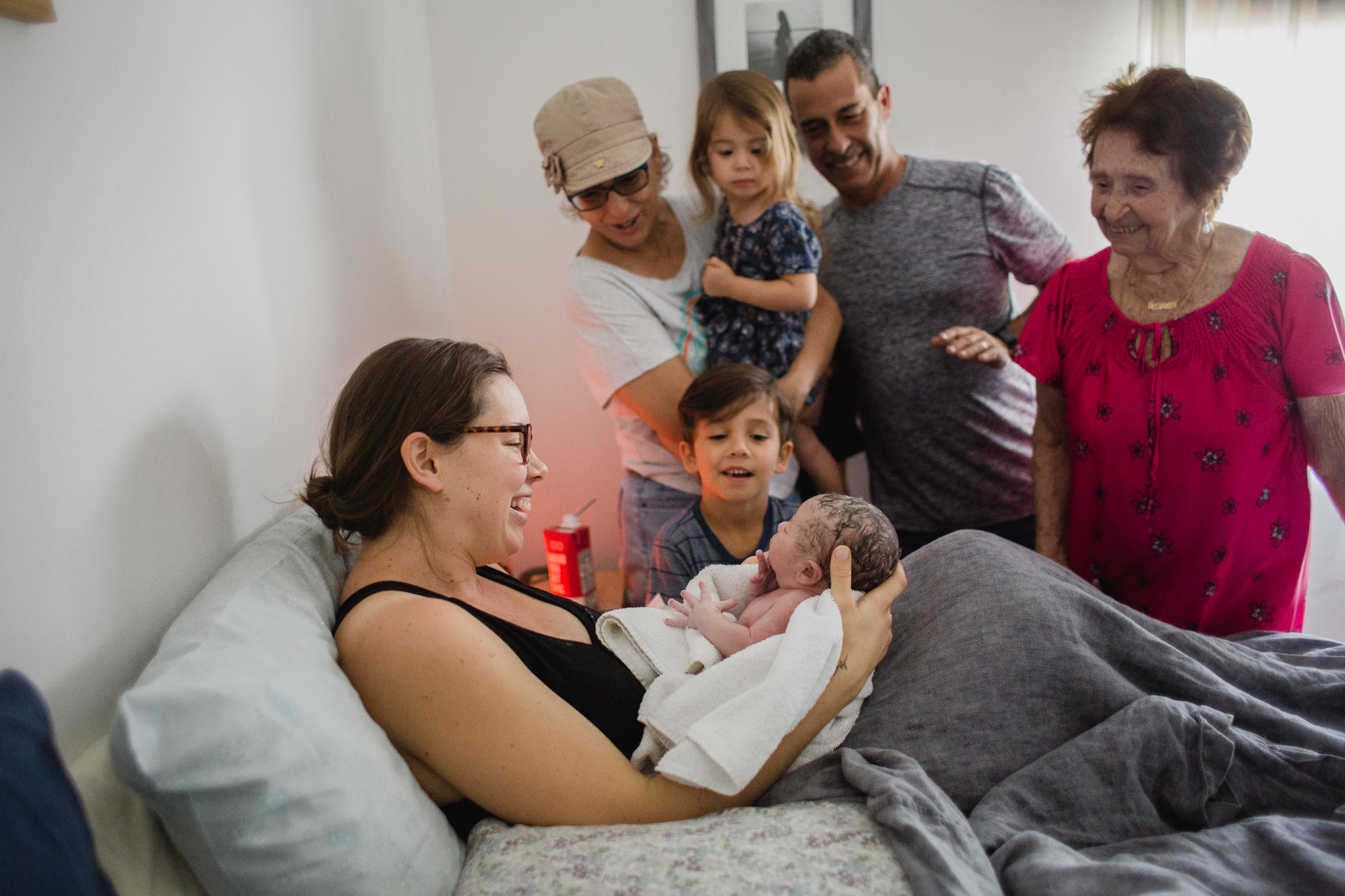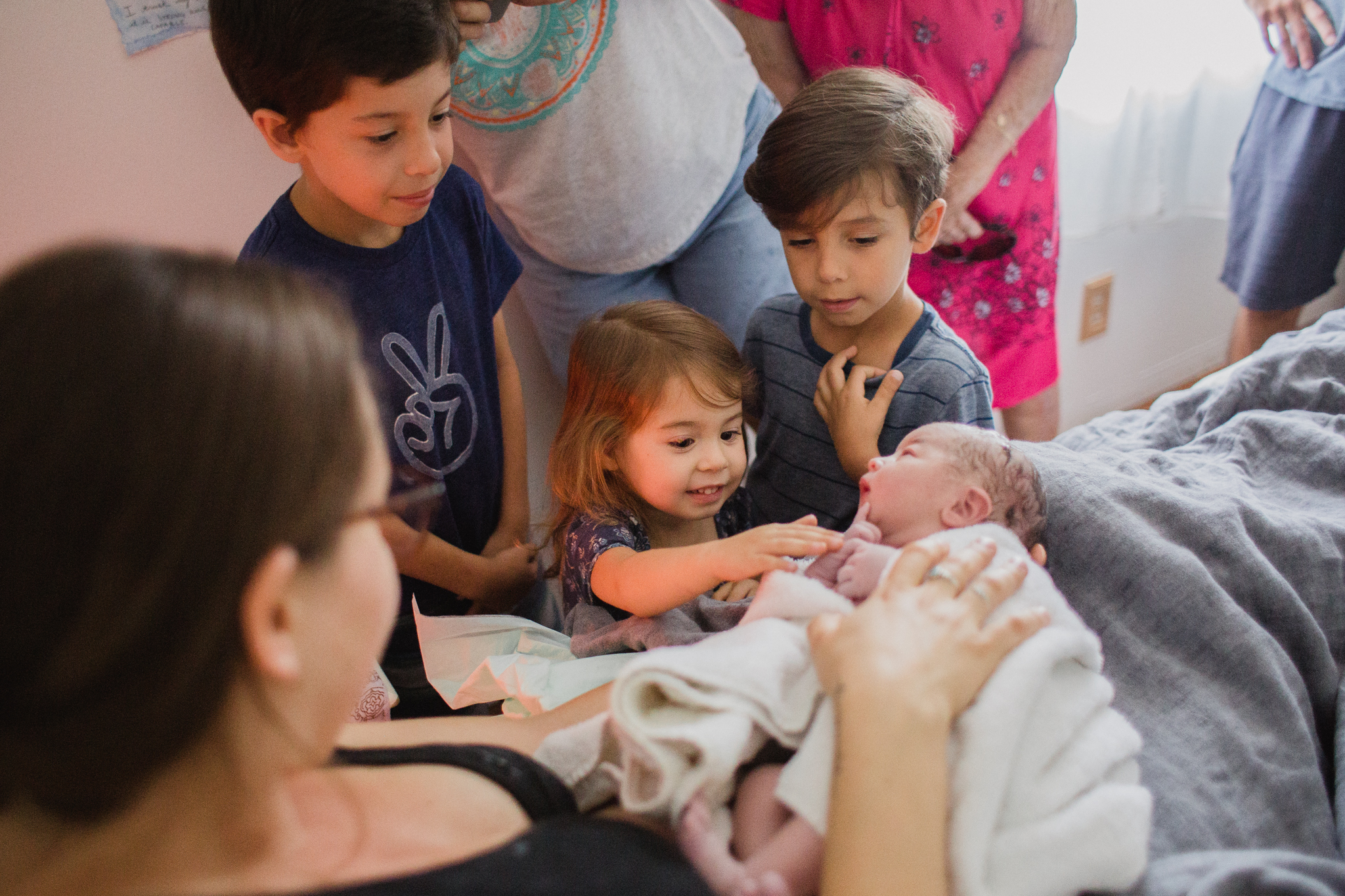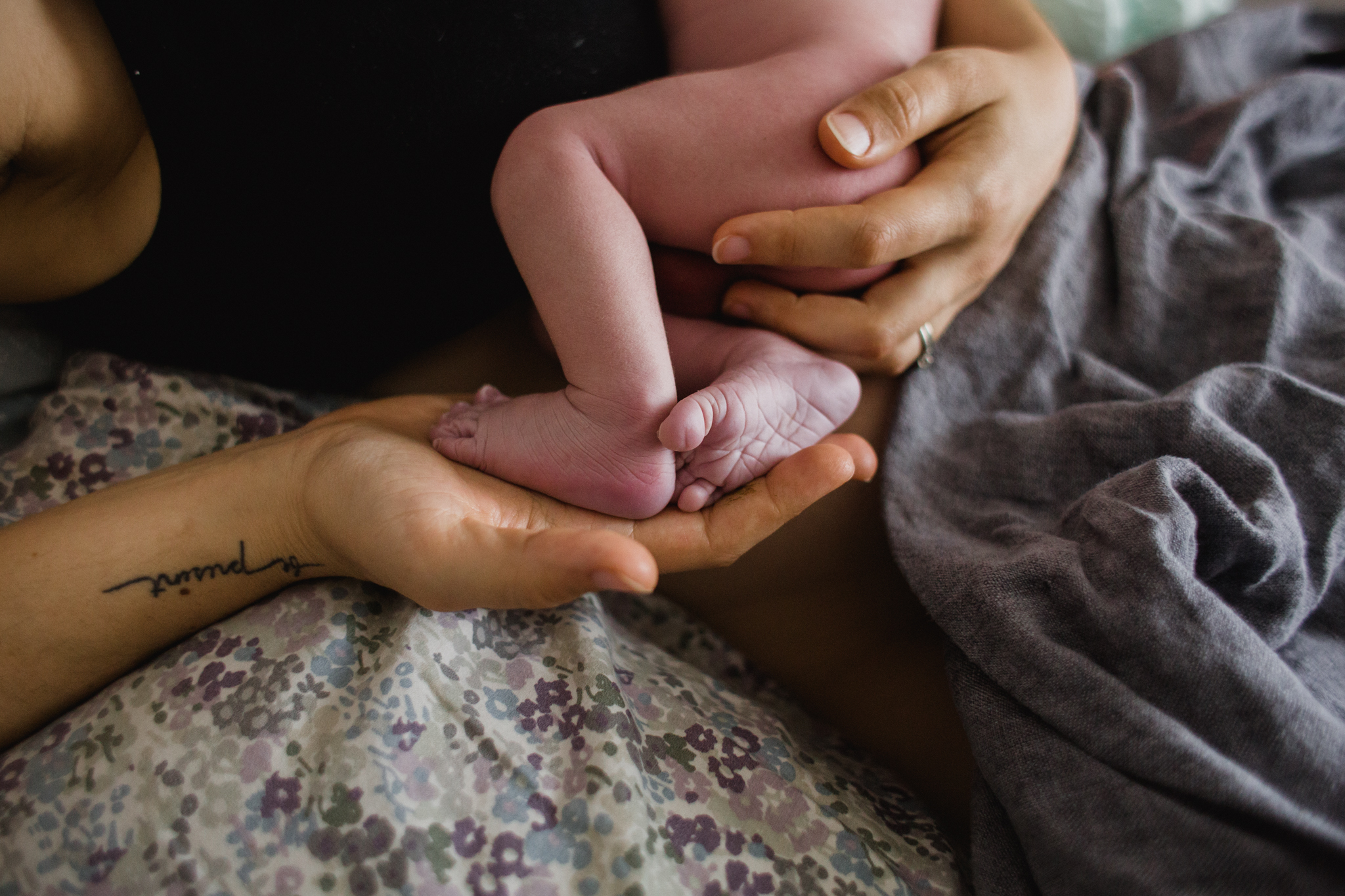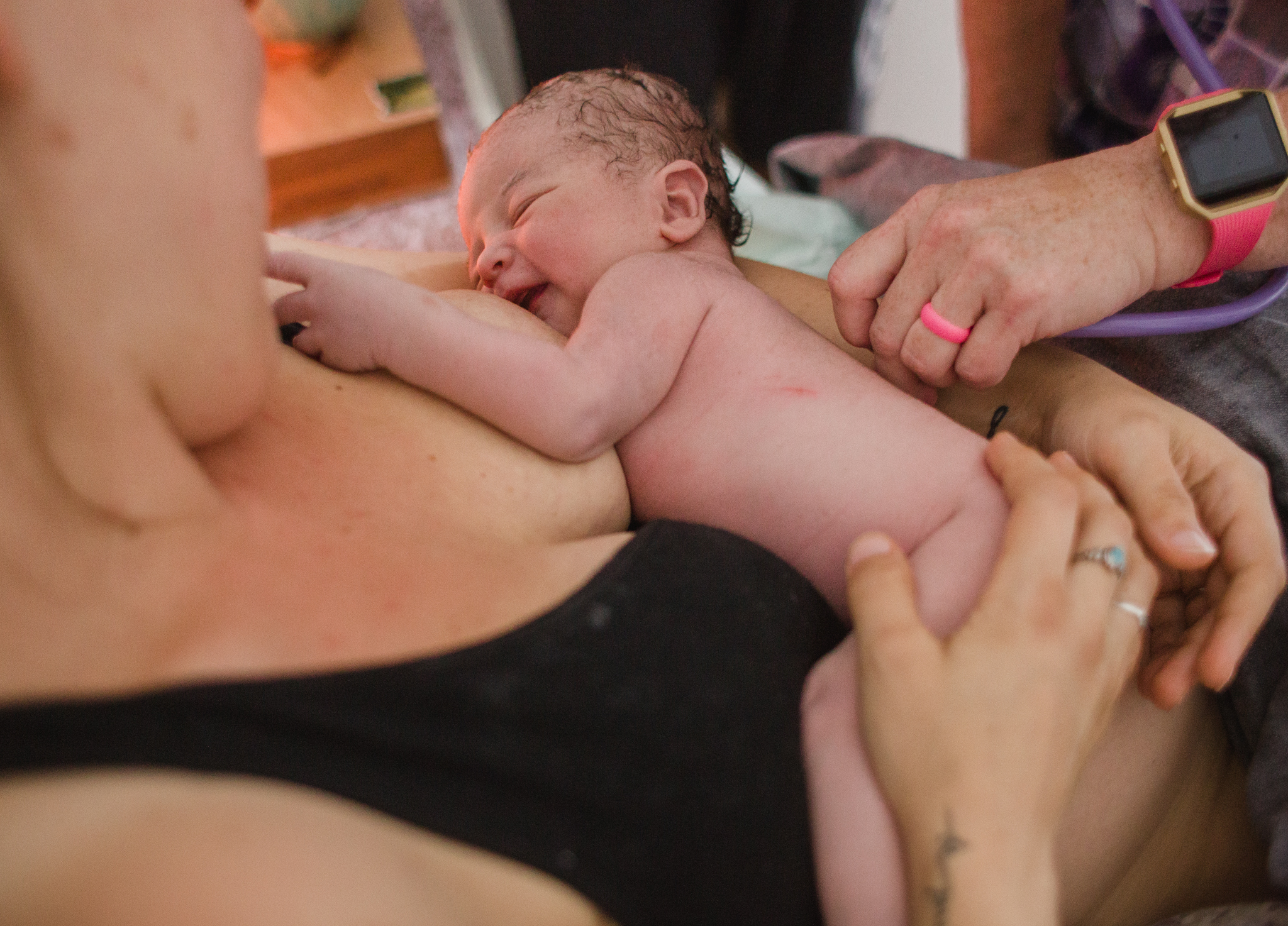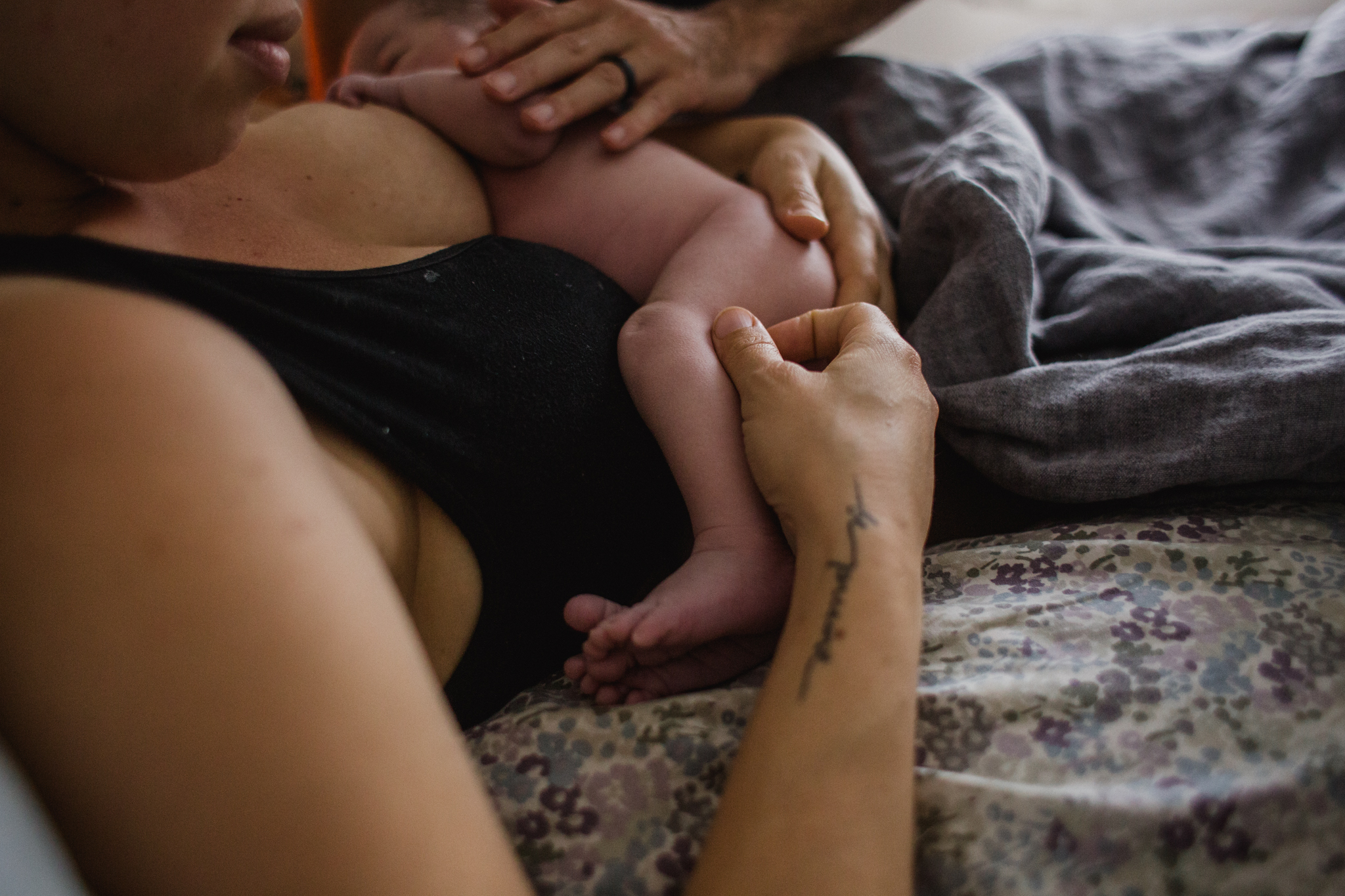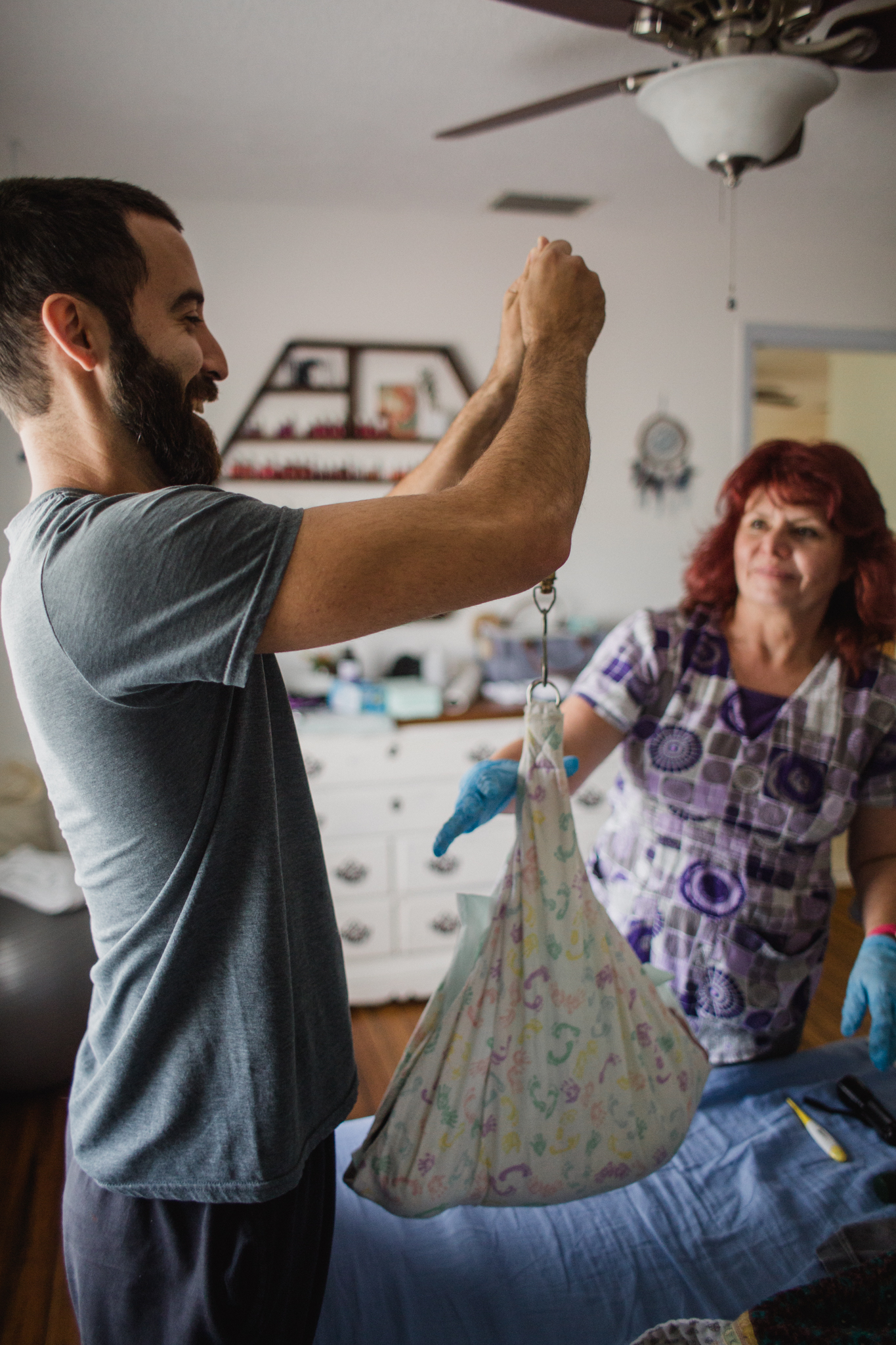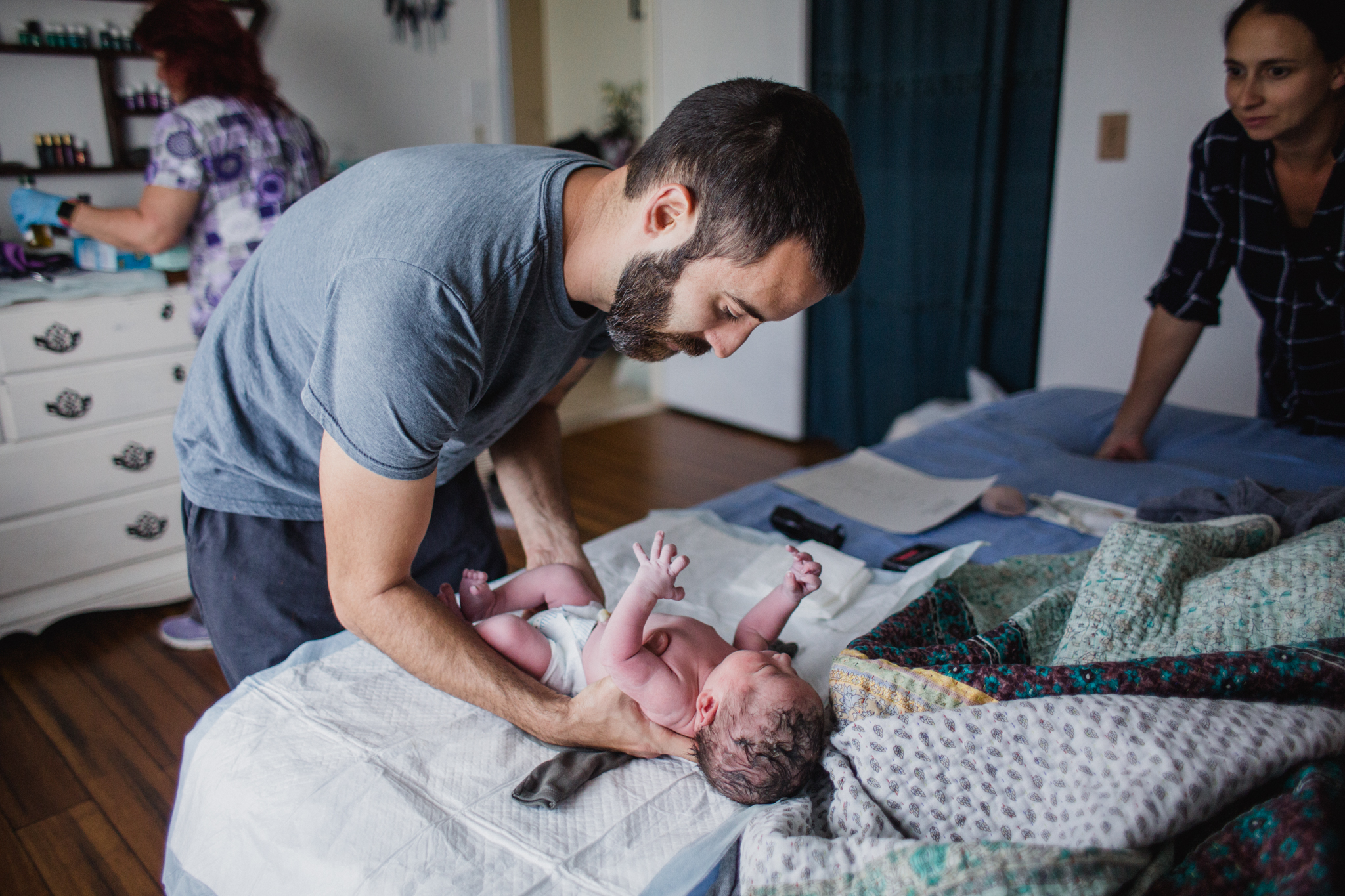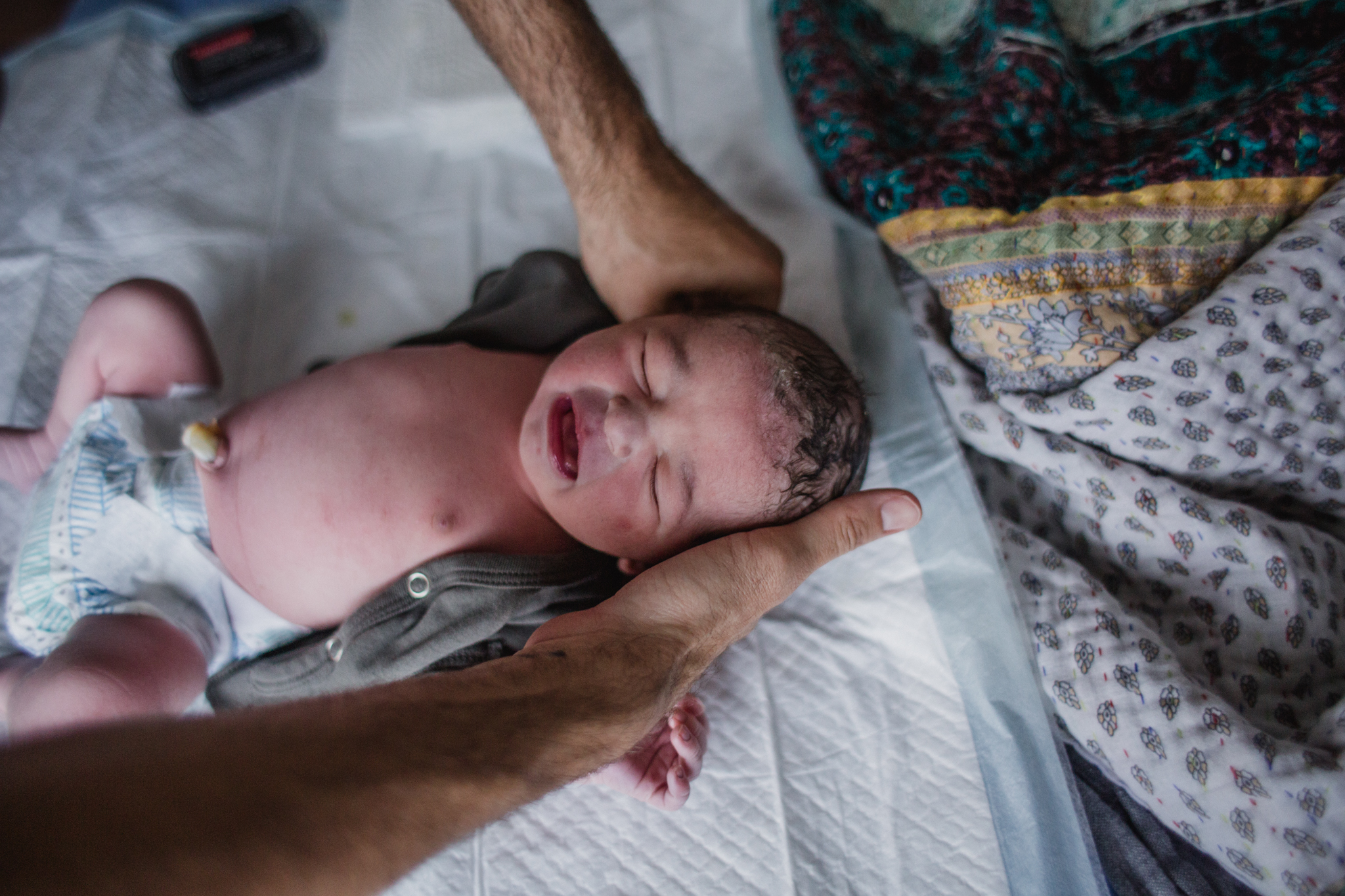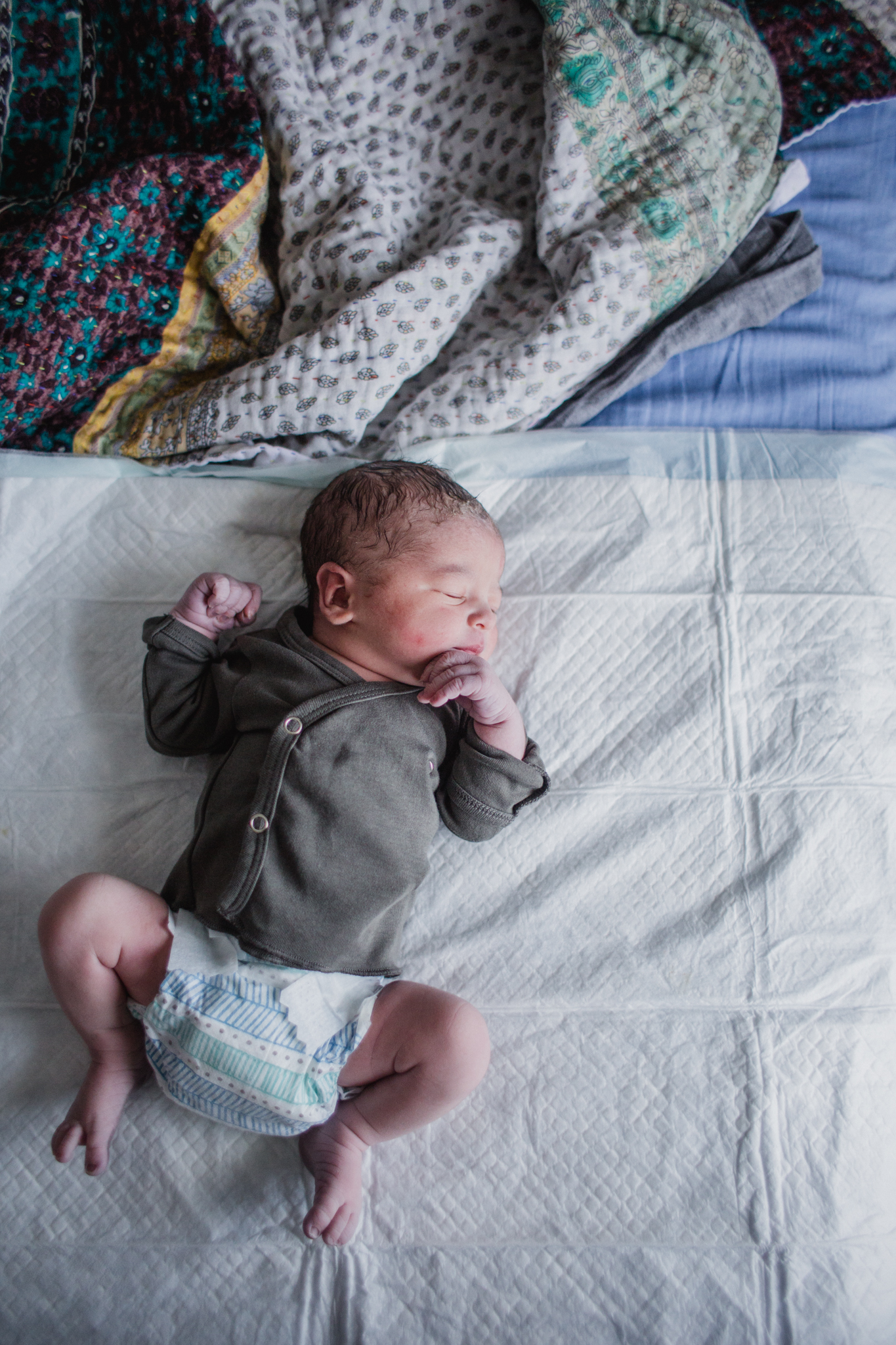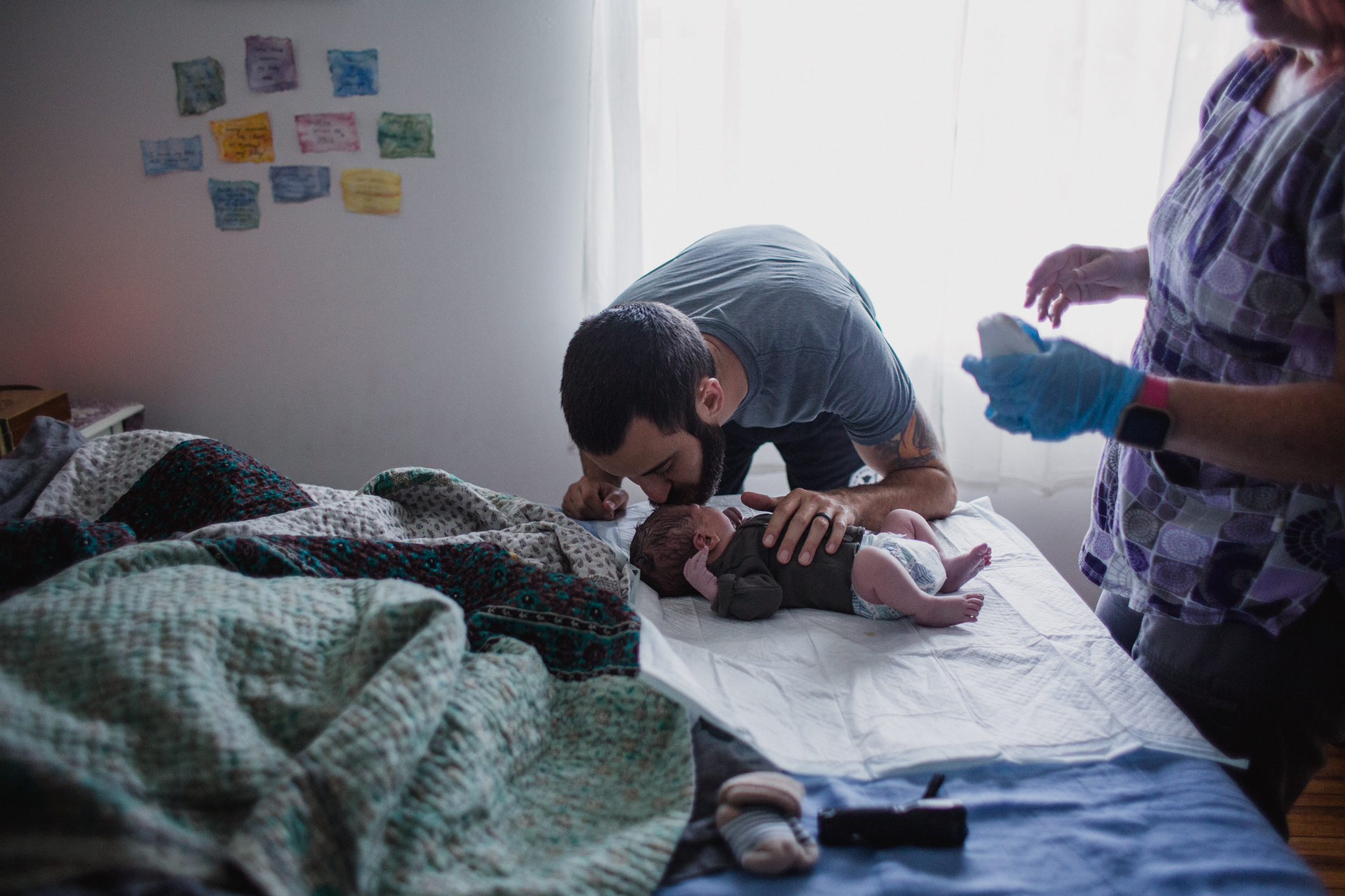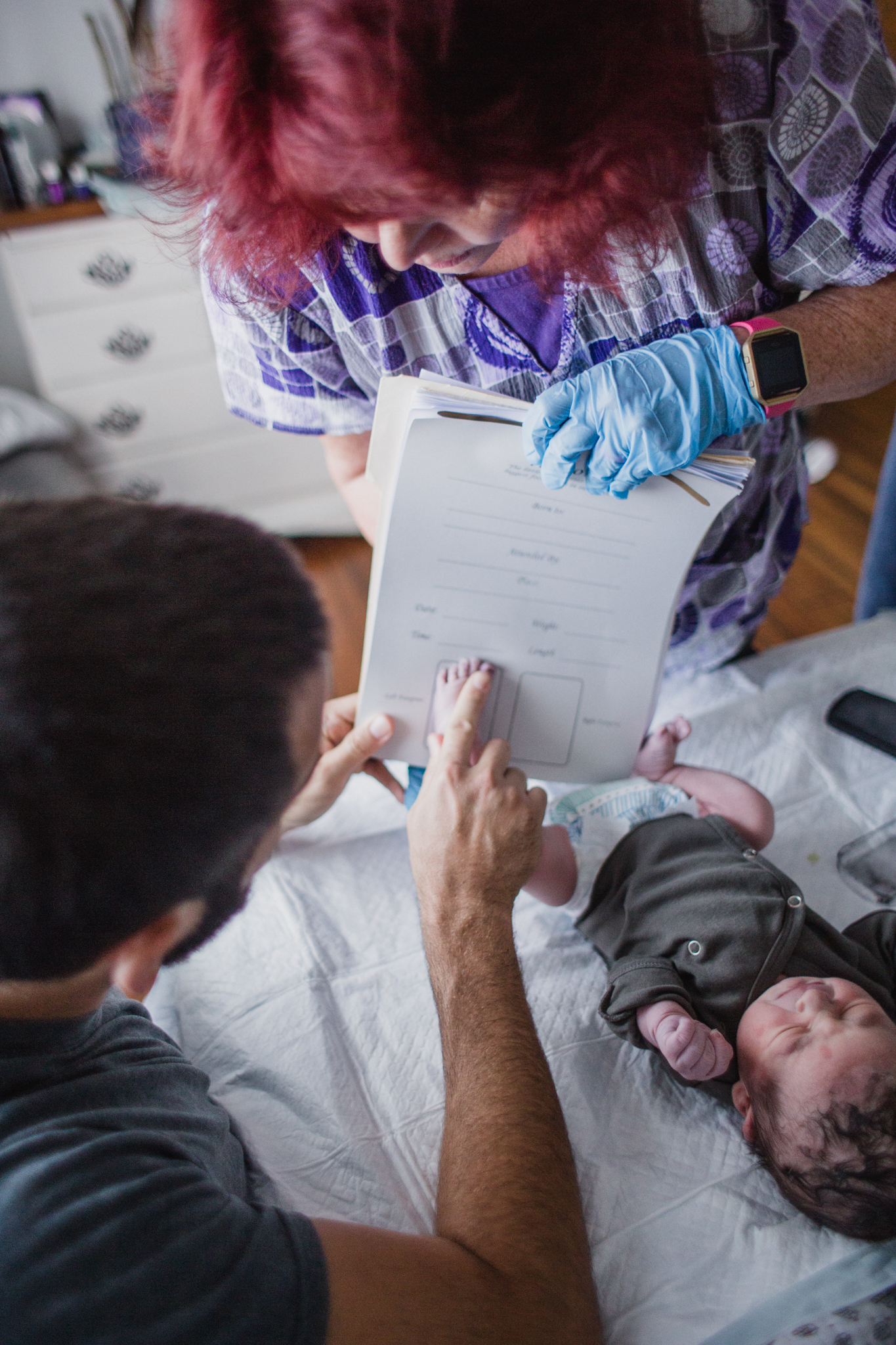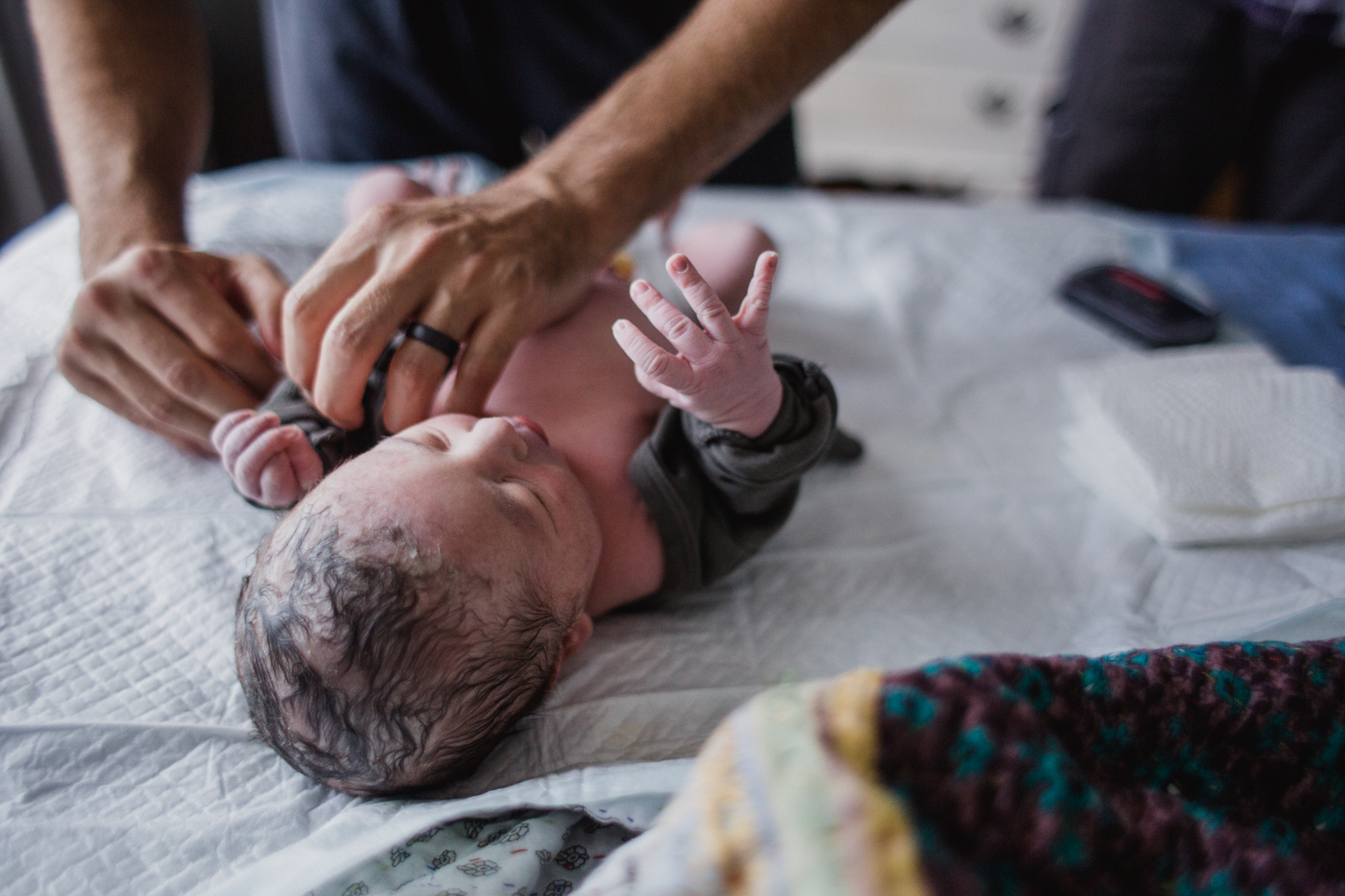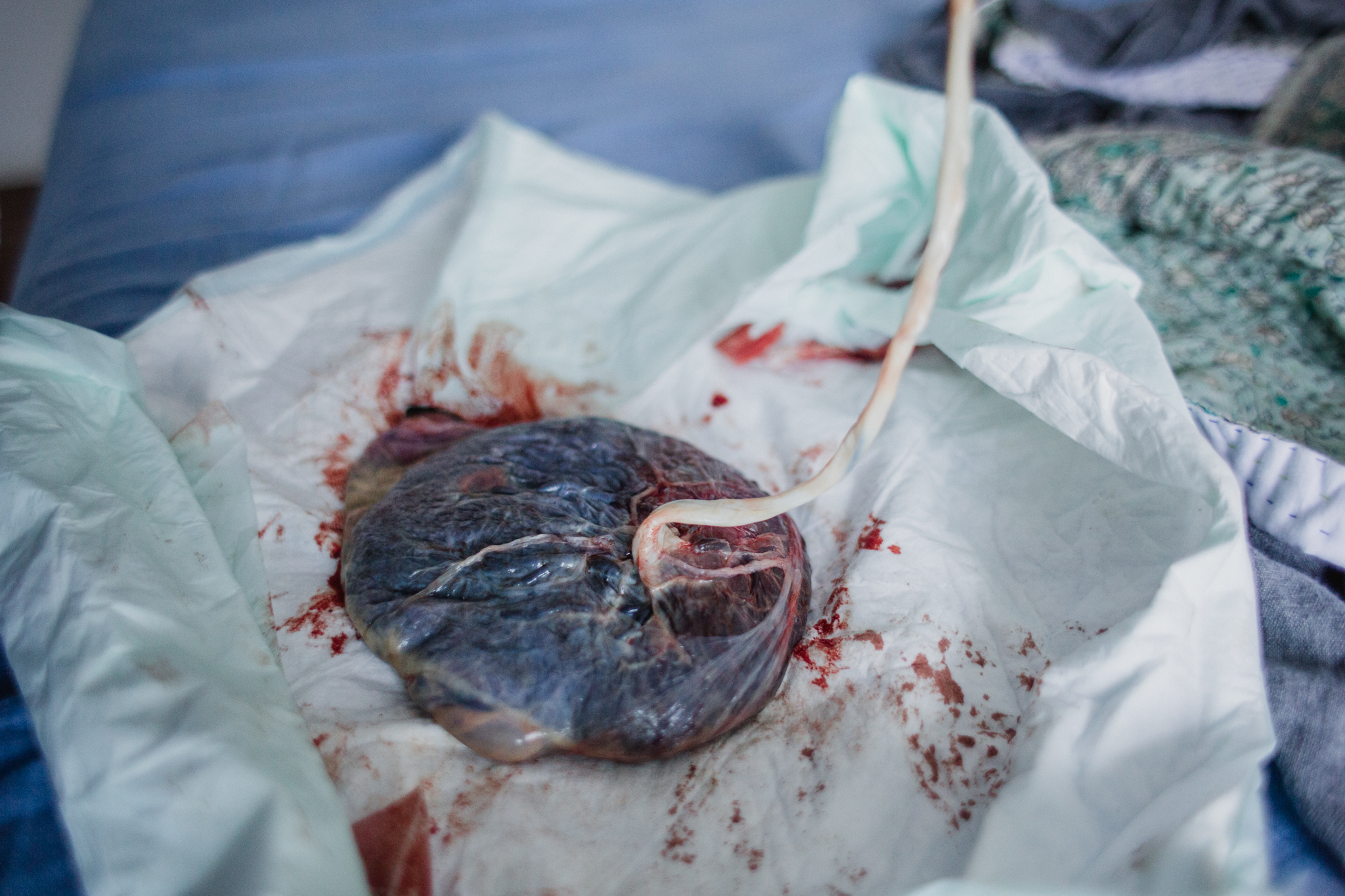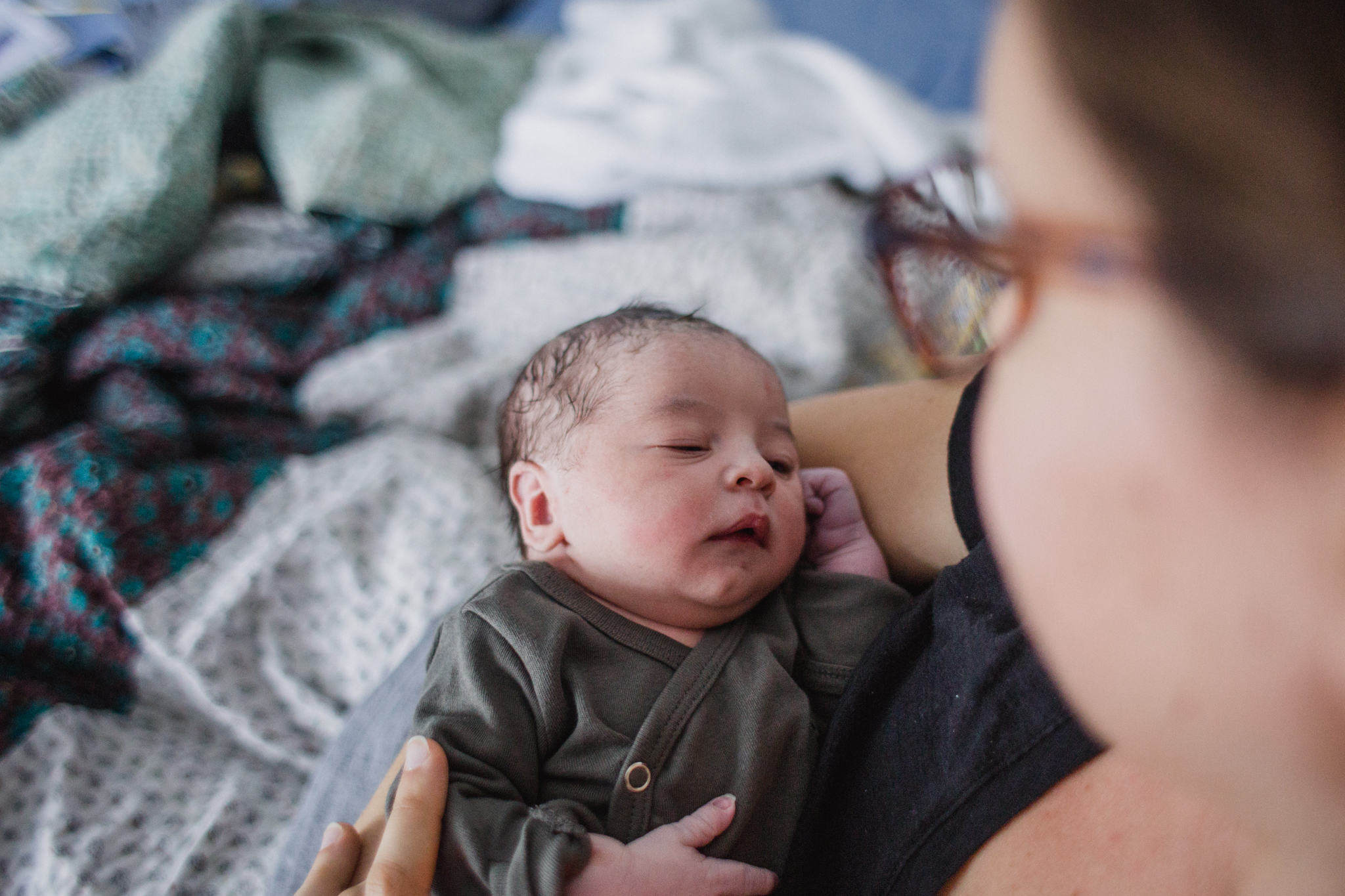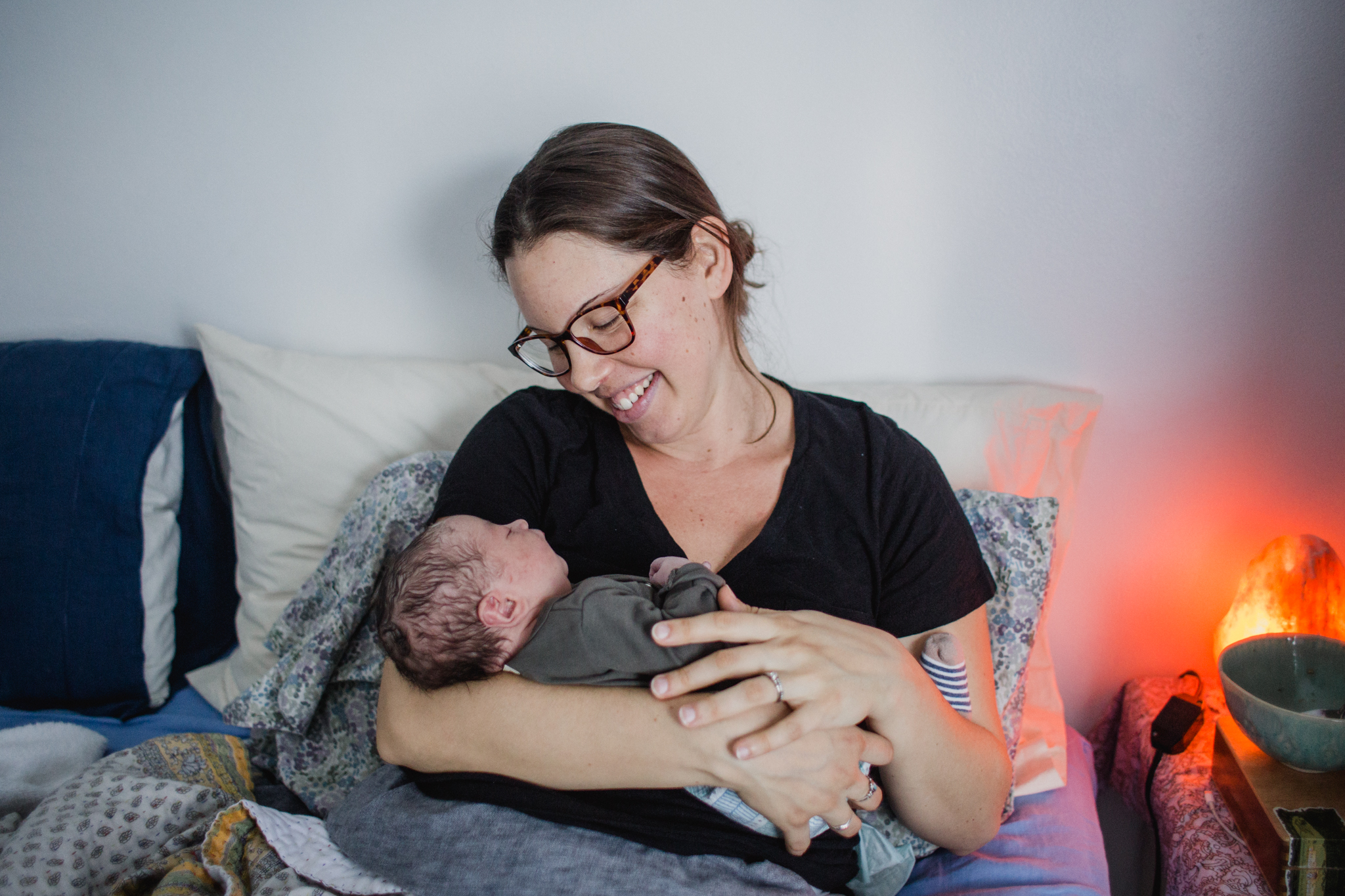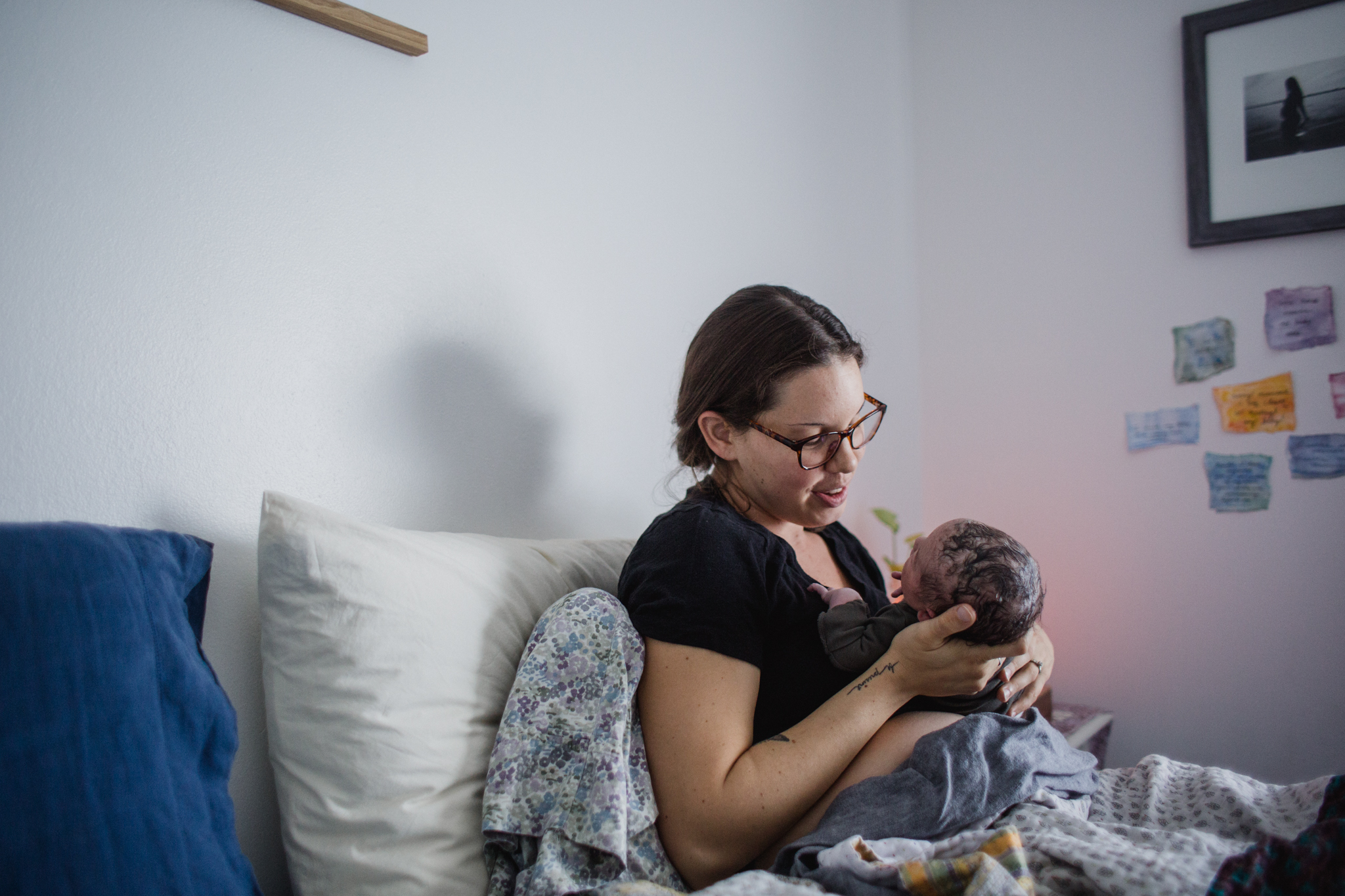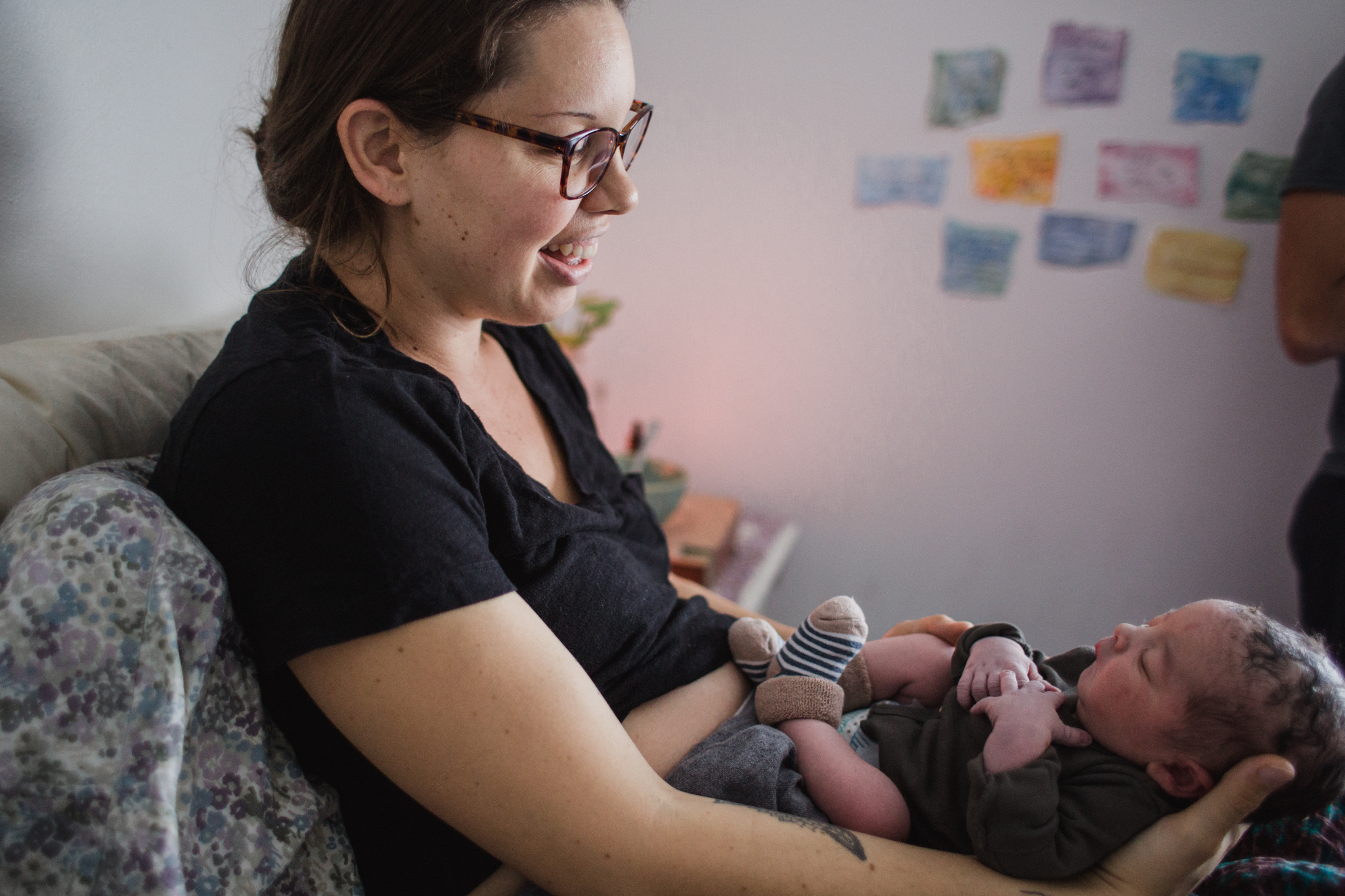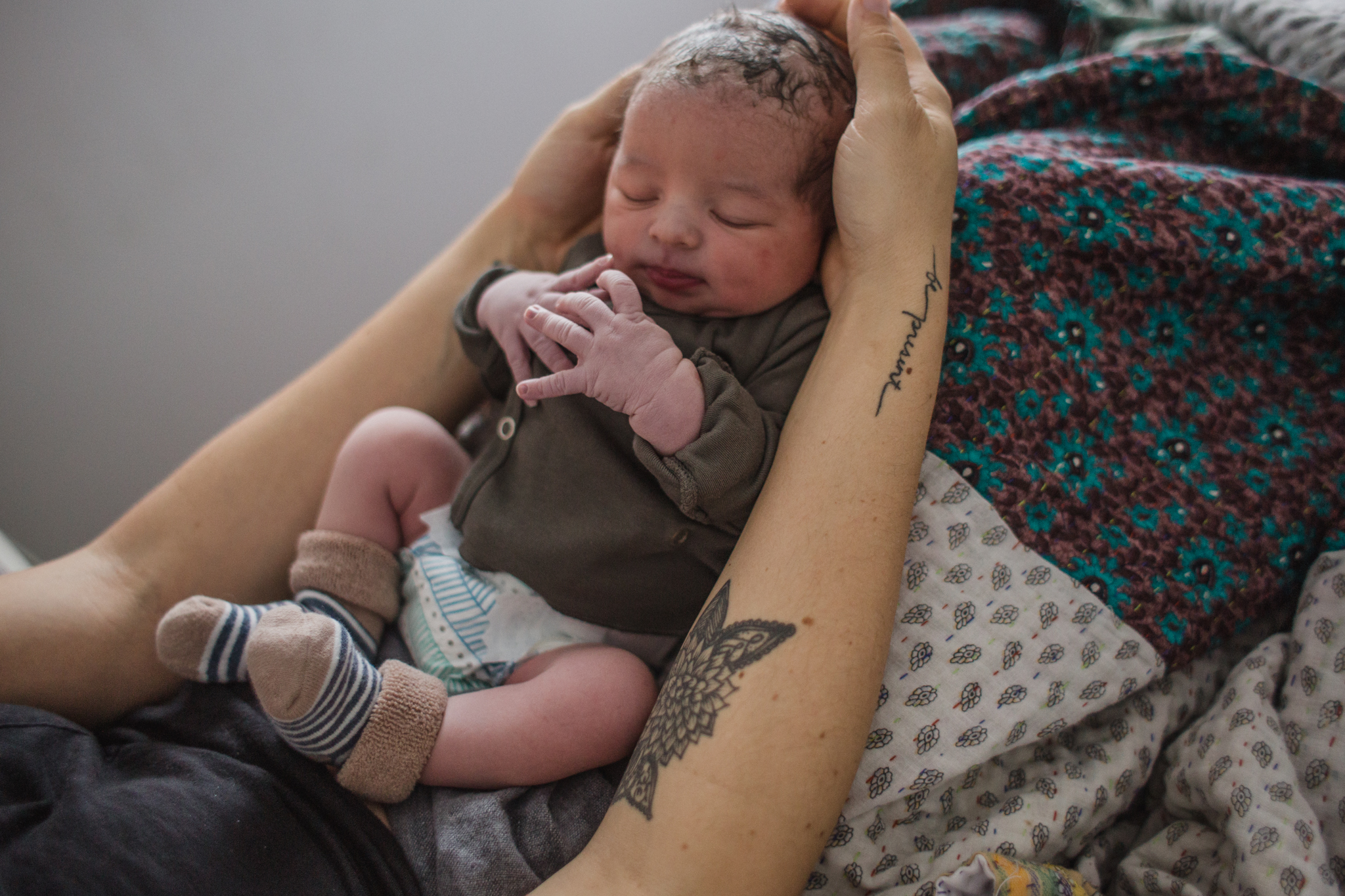Paulina Splechta (Birth Photographer): Dr. Roseff, I’d really love for you to talk to our viewers about your philosophy of fertility and how you approach it. I feel very swept away with your approach because I feel its very holistic.
Dr. Scott Roseff: I do take a different approach to fertility, I’ve been doing this for almost 30 years and people come to me with a problem. The problem is either getting pregnant or holding a pregnancy or both. I saw a patient this morning who has been trying for four and a half years. She has both difficulty getting pregnant and any time she did become pregnant, she’s lost those pregnancies, she’s had five losses. I’m an expert in getting to the bottom of what the problem is or the problems are.
When people go to a fertility doctor they typically start treatments “okay you’re having difficulty getting pregnant, let’s do this and see if it works” but what I do is I always take a half a step back and say let’s get to the bottom of what’s going on, so I can know what your problems are so we can address them head on. My primary objective with every patient I see is to find out the problems and see if I can fix them or overcome them so that I can have perhaps the man take this pill and the female do this and then go home and get pregnant. I like to restore natural fertility and in doing that its a very complex picture. It’s not just sperm and egg making a pregnancy. It’s psychological issues, its sociological issues, lifestyle habits; its so complex.
The person is a compilation of everything going on in his or her life, it’s not just sperm and egg. So I need to look at stress, food, exercise. Too little exercise can have an impact. Too much exercise can have an impact on their success. I look at body fat. Most fertility experts are not measuring body fat. Too little body fat actually has a very negative effect on health and reproductive outcome. Too much body fat, which is usually more commonly the problem, can have a negative impact on outcome as well as health. The saying is “if we don’t have our health, we have nothing” Many people come to me with health problems that haven’t been addressed, even when they go to their family doctors, the family doctors are not addressing these issues with telling the patients that you have a problem that needs to be addressed before you get pregnant.
I do a lot of what’s called preconception counseling where I go through factors that can cause a baby to be sick, or a baby to be born with health problems, or increased risk of autism for example, and these are things that I look at before people get pregnant so that when they get pregnant, they’re going to have the highest chance of getting pregnant, staying pregnant, having a healthy pregnancy and a healthy baby, and that really takes a very broad approach which is holistic, rather than just “okay we’re going to do this treatment hopefully you’ll be pregnant and out the door and good bye and good luck” I want healthy mom, healthy dad, healthy pregnancy, healthy baby and there’s a lot that goes into mental health, physical health, reproductive health.
It’s a very big picture. People come with problems and its a jigsaw puzzle and my job is to put the little pieces of the puzzle together and it takes a lot of work and it takes some time. I understand the desire for people to be pregnant yesterday, “I’ve been trying for X amount of time and I want to be pregnant now” but you always have to take a half a step back and address the issues. One patient came to me from Russia having failed in vitro fertilization 7 times and when she came to her consult she said “I heard that you’re the best and I want to do IVF with you and I want to do it now.” And I said “that makes no sense, you failed 7 times, there are problems here and I need to level that playing field before you do this again.” So I did, it took 4 months to level her playing field and then when we did IVF she conceived twins and delivered twins first time and the philosophy is to do this once, to do it right and to make it work.
Paulina Splechta (Birth Photographer): But I love what you said “the philosophy is to do this once, to do this right and just make it work.”
Dr. Scott Roseff: And often it does.
Paulina Splechta (Birth Photographer): Before I met you I had never had any experience with doctors who work in this field, and I only have stories from friends and family members of trials and trials of IVF that have failed for years and years and they were just getting to the point where they felt that they were never going to have a baby unless they get an egg donor or a surrogate..
Dr. Scott Roseff: So many people come to me from other fertility practices having been told they need an egg donor. I saw a patient this morning who was told over the last three years she was at her previous fertility practice that she needs a surrogate, she needs someone else to carry the pregnancy — she doesn’t. People who say that they were told they need an egg donor, I’ll test them, and find out that they really don’t need to do that. You really need to know what’s really truly going on, rather than saying “okay, this failed, that failed, so let’s get a sperm donor or an egg donor and maybe that’ll work, let’s get another uterus and put an embryo in there and see if that’ll work.” You really need to find out what the problems are and address them. Sure, some people need an egg donor, yes, there are occasions when someone needs a surrogate to carry the pregnancy, but so many people have been told the wrong thing and when I see them and tell them what they really need to do, first of all, they’re blown away by it and second of all, when they’re successful, I hear every minute of everyday “I wish I came here first rather than having spent X amount of time, X amount of years, X amount of money, X amount of emotional toil elsewhere.
I just like to see if I can help people conceive first objective is natural conception, if that’s not in the cards, if its something thats not likely going to work, then there are tools that I have to assist people in becoming pregnant, but I want to look for the simplest, least invasive, least expensive thing that we can do to achieve a high degree of success. IVF is the bottom of the list, it’s the last resort, its the last thing that I ever want anyone to have to go through. Yeah, a lot of people need IVF, do IVF here, and are successful, but it’s the last thing that I want anyone to have to go through.
Martha Lerner (Zenmamalove.com): Before we go onto the next question, I wanted to ask you, if you wouldn’t mind sharing with us, what got you into this field, what made you decide to get into fertility.
Dr. Scott Roseff: When I was in my training, I had to rotate through different disciplines in the medical field, so we had to do some time in pediatrics, in general surgery, and obstetrics and gynecology and psychiatry, and all the different disciplines, and when I did OBGYN and the first time that I was in a delivery room with someone, and it was just me — they threw me in and said go deliver the baby, and one minute it was the patient in the room with me and the next minute there were three of us in the room, the baby was there, and no one came through the door, I said “this is the most miraculous thing I can ever fathom, bringing another life into the world” and I said “I want to be an OBGYN, I want to deliver babies and take care of pregnant women for the rest of my life.” So then I started my training in just obstetrics and gynecology, and in doing so, one of the rotations that we have to do is we have to go through the infertility rotation, and then when I saw the heart break of people who were having difficulty getting to the point of that miracle, I said “this is what I really need to do, I need to help people to achieve that miracle,” rather than just bring the miracle and deliver the baby, let’s help people who can’t get there to get there. And so I went into the fertility field.
Martha Lerner (Zenmamalove.com): So if a woman comes to you and is having difficulty conceiving, what’s generally something you would recommend for her to do in the beginning?
Dr. Scott Roseff: If she has a partner, that she and her partner need to look at their lives, they need to look at a broader picture of why they may not be getting pregnant or may be losing pregnancies. Look at your lifestyle, look at your nutrition, look at your general overall health. Pregnancy is growing another life inside of your body for three quarters of a year. When I do the first pregnancy ultrasound, and I measure the baby and the baby is 5mm on that first ultrasound, which is the size of your pinky nail and there is a little flicker of a heartbeat and you have this 5mm fetus inside of you and you have to nourish it and you have to grow it and you have to sustain it, if you’re not in good mental health and good physical health, how do you expect your body to nourish and grow successfully another life for three quarters of a year. So people really need to look at the bigger picture, "are we stressed out” because there is a connection between the mind and the body.
You have to look at lifestyle factors, are you overweight, are you obese, are you underweight, because those can have affect as well. Men, can be exposed to high levels of heat, are you going to a sauna, are you going to a jacuzzi or a hot tub several times a week, it has a really bad effect on sperm. So you have to look at certain things that can have effect on fertility. And then, if you’re having difficulty and think there could be a problem, don’t wait too long. Men make new sperm in their bodies every ten weeks until they’re dead, but women don’t make new eggs.
When a woman is 25 years old, her eggs have been in her body for 25 years, but if she’s 30 or 35 or 40, her eggs have been sitting on a shelf for 40 years and since she doesn’t make new ones, her egg quantity goes down, but more importantly, her egg quality goes down. If the egg quality is low, then the egg may not fertilize or if the egg does fertilize and it’s a bad egg, those pregnancies are more likely to miscarry. If its a bad egg or an older egg and the pregnancy doesn’t miscarry, its a greater chance of a genetically abnormal baby, like a down syndrome pregnancy.
One of the important things for women to remember is that they should not wait too long. I ask my patients when they think their egg quality really starts to go down and 90% of the time they say age 35 and that’s not correct. The egg quality starts to go down around age 24, and it’s a slow drop from 24 to 30 and then its a pretty quick drop from 30 to 35, and then it’s a very sharp drop there after. So don’t wait too long. I see people who are 40 years old who go to their family doctor or their health care provider and say “we want to have a baby” and the doctor says “well, you need to try for a year, and if you’re not pregnant then we can do some tests,” and if you’re 40 you don’t wait a year. If you’re 35 you don’t wait a year. So don’t wait too long.
Paulina Splechta (Birth Photographer): So I guess it really depends on the state of a person’s health and their age, when they should start taking it to the next step, but if we could generalize, if a woman has been having issues conceiving for maybe 3, 4, 5 months, what should her next step be at that point, is that too much time to wait?
Dr. Scott Roseff: Well, no, unless there is something in her history or her partner’s history that suggests that we’re going to have a problem right from the onset. For example, there are women who don’t get regular periods. You’re 25 years old, you want to be pregnant, you get a period 8 weeks apart, 12 weeks apart, 6 months apart — don’t wait, there’s a problem. Go to your doctor and start to get tested and find out what the problem is. There’s an infection called chlamydia, its an infectious disease that can cause damage to a fallopian tube. If you’ve had chlamydia when you were 17 years old, and now you’re 22 years old and you want to have a baby, get tested and make sure you don’t have fallopian tube damage, because it’s in your history and therefore you don’t wait and wait and wait because there’s a predisposing factor that maybe something right off the bat that can be addressed or should be addressed or looked at.
In general, if you’re under 35 years old and there’s really nothing in your history that you think suggests you’ll have a fertility problem, you could try for up to a year. If psychologically that’s going to hurt you then don’t wait the year, see a fertility expert sooner. If you’ve reached or passed your 35th birthday, the general rule is 6 months. If there’s really nothing in your history, you can try for 6 months, and if you’re not pregnant after 6 months, see a fertility doctor.
Paulina Splechta (Birth Photographer): What types of fertility treatments do you offer here?
Dr. Scott Roseff: The first thing I want to do with any patient is to try to see if I can address issues or problems to the point of allowing them to go home and have sexual relations and conceive on their own and that’s my primary objective with every patient I see. Sometimes if a patient comes here and had her tubes tied, had two babies and now wants baby number three and she had a tubal sterilization, she’s not going to conceive on her own. Depending on what the tests show, the fertility treatments are dictated by the test results. For example, if the sperm is a little bit poor and all other things are okay, then there is a relatively simple procedure called Intrauterine insemination (IUI for short) that maybe appropriate. But if she’s 39 years old the odds for success with that will be quite low. So we really need to look at the whole picture and say if you’re 29 years old and you have a little bit of a sperm issue and you don’t ovulate regularly then I can give a fertility pill and we can do Intrauterine insemination with the sperm to have a pretty good chance of success. If you’re past your 35th birthday and especially past your 37th birthday, then IUI is really not a great option, fertility pills are really not very effective, if you’re older; So if IUI is not an option or a good option, then the next step above that is injectable fertility drugs that are given with the purpose of stimulating multiple eggs to grow and develop but it would be dangerous to allow 6 eggs to ovulate and inseminate someone, because if we throw a handful of sperm at 6 eggs, she could possibly be pregnant with 6 babies and that’s not a good outcome. If we’re using injectable fertility drugs then the treatment would be to extract the multiple eggs, fertilize them and grow embryos and that’s in vitro fertilization. If we’re doing in vitro fertilization we need to look at the age of the female, because if she’s past her 35th birthday a fairly large percentage of the embryos would be typically chromosomally genetically not normal, so rather than grow the embryos and put one into the uterus we would genetically test the embryos for genetic mistakes like down syndrome before we put an embryo into a uterus and then when we have a genetically normal good quality embryo that would be the one we that would be chosen to put into the uterus. So it has to be individualized and personalized for ever patient, every couple.
One of the other things I see from the records I get from people who have been to other facilities, is that those facilities tend often to do cookbook medicine as I call it. “It’s a recipe, its a cookbook, and you get it and you get it and you get it and you get it”
But she’s different than she is and she is and she is and you can’t turn to page 6 in the cookbook and do the same thing for everybody it has to be individualized and that takes thought it takes thinking outside the box, it takes effort and it takes very individualized, personalized care and I think if I was going through it, that’s what I would want to have done and that’s what needs to be done and should be done.
There are adjunctive treatments that I recommend for all of my fertility challenged patients. I do recommend fertility acupuncture. There are acupuncturist all over south Florida, many of them have special expertise in the fertility field. I tell every fertility patient that they should consider fertility acupuncture. there are many potential benefits of acupuncture.
I look at this as a team effort. I cannot do this without the assistance of other people like acupuncture doctors, I have fertility psychologists that I refer my patients to for stress reduction and mind body balancing along with the acupuncture. Some of them have a speciality of reproductive medicine psychology. We collaborate together and it really helps the stress reduction and these other techniques for achieving greater success.
Martha Lerner (Zenmamalove.com): That’s wonderful, that was my next question, what other alternative or complementary modalities would you recommend?
Dr. Scott Roseff: We have a tremendous demand for nutrition counseling and lifestyle changes in our patients. Many of our patients are overweight. Many of our patients are obese. And some of my patients are severly underweight. They teach us nutrition about one day in medical school so we can’t be the nutrition experts but there are nutrition experts out there and in my practice we have someone who has advanced degrees in nutrition and exercise physiology, she’s a professor of nutrition at one of the universities in Miami and I have my patients see her and work with her to optimize their health and optimize their bodies so that they will have a significantly improved chance of success. The patient who came to me from Russia, with 7 failed IVF cycles, had some physical body issues that needed to be addressed, lifestyle changes, nutrition and exercise, and eating right and eating better, and losing body fat. She worked with our expert, her name is Marta, over those 4 months. And then Marta said, “time to go back to Dr. Roseff and start moving forward,” we did with incredible success.
Like I said, I can’t do this alone, I have great expertise in what I do and knowledge but its a broader picture, its a bigger picture.
Paulina Splechta (Birth Photographer): I’m so excited by the fact that you’re here, you’re in the heart of south Florida, in Boca Raton at IVFMD, so all the families from Port Saint Lucie and Jupiter can have access to you and all the families as south as Miami. Thank you so much for making the time for sitting with us and share with our viewers. We hope we can reach at least one family that could benefit from this gentle approach to fertility. If anyone has any questions for Dr. Scott Roseff, please message us privately or leave a comment below and we will be happy to connect you.




